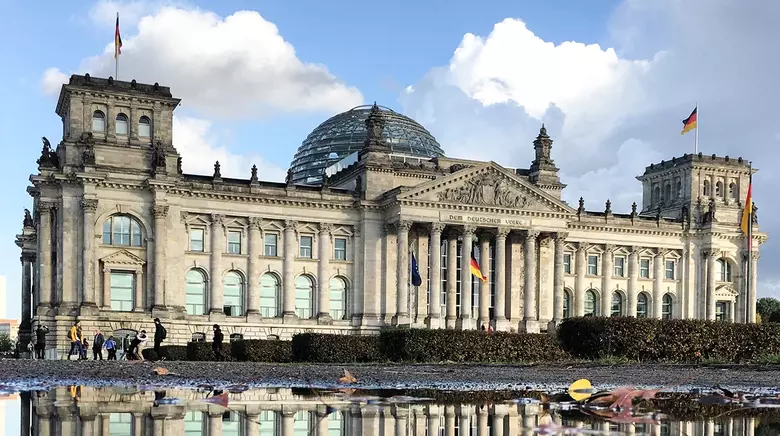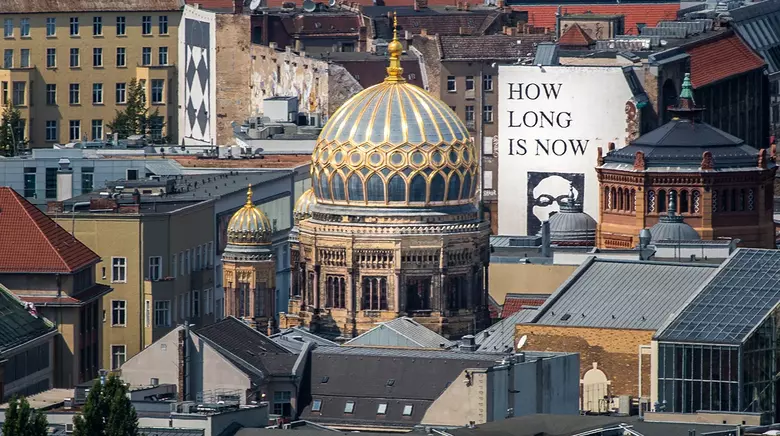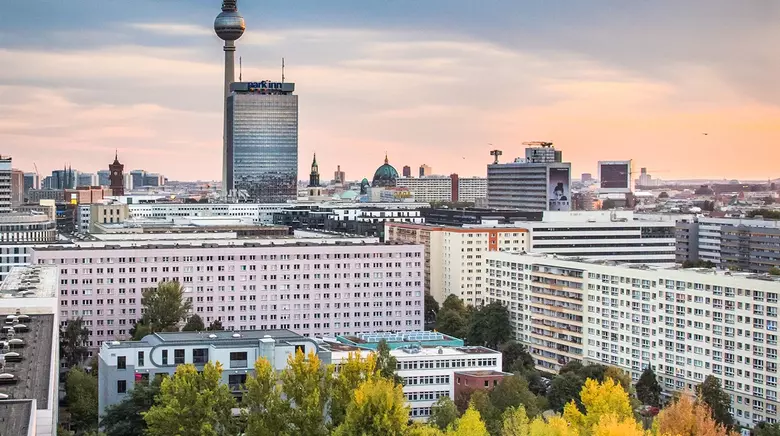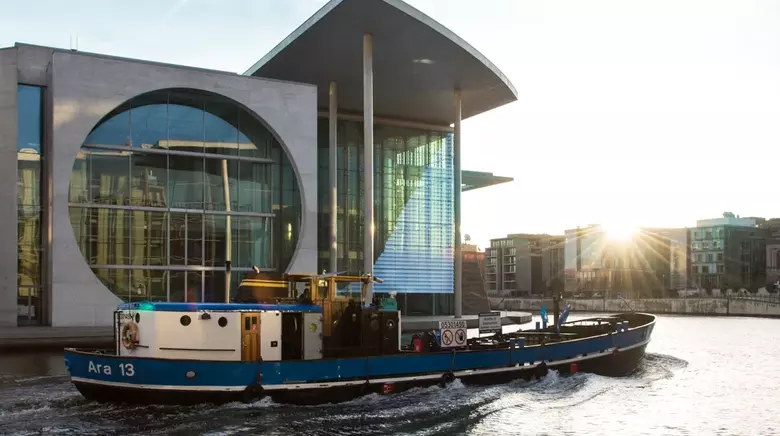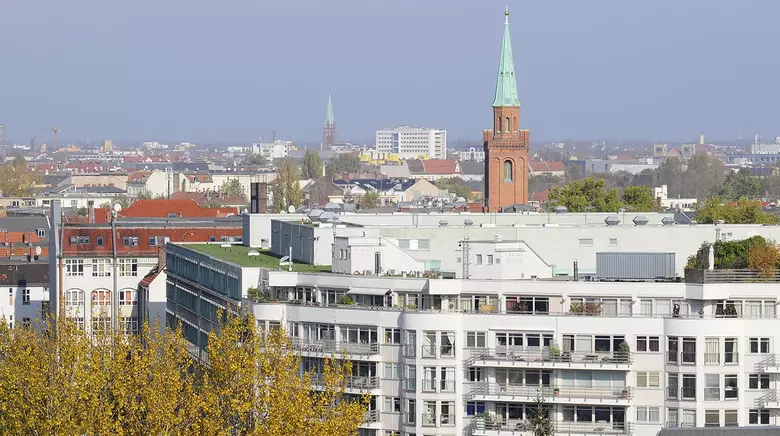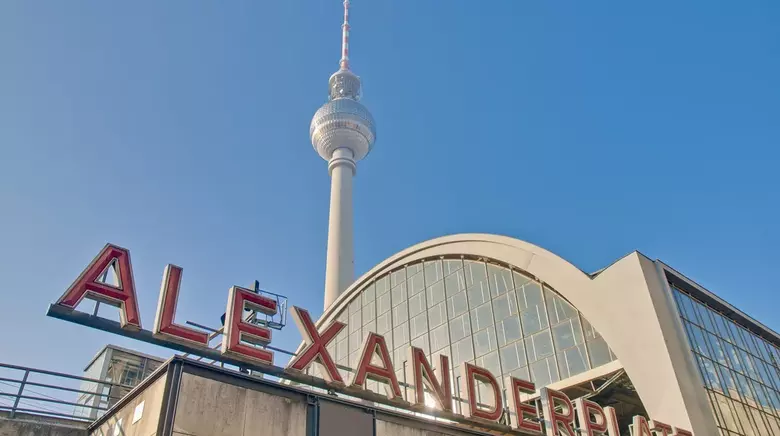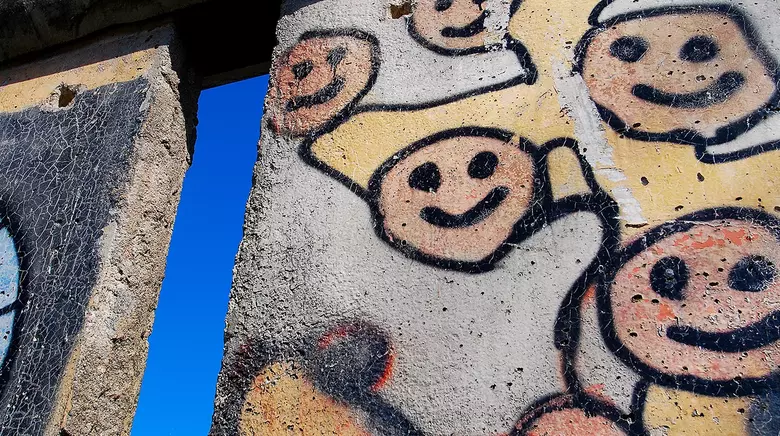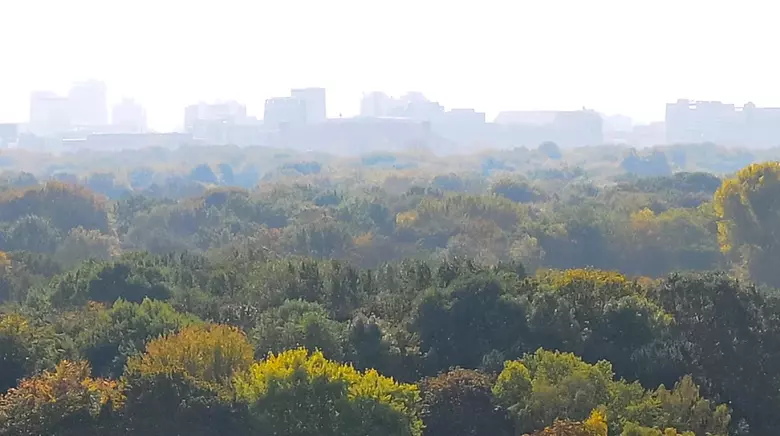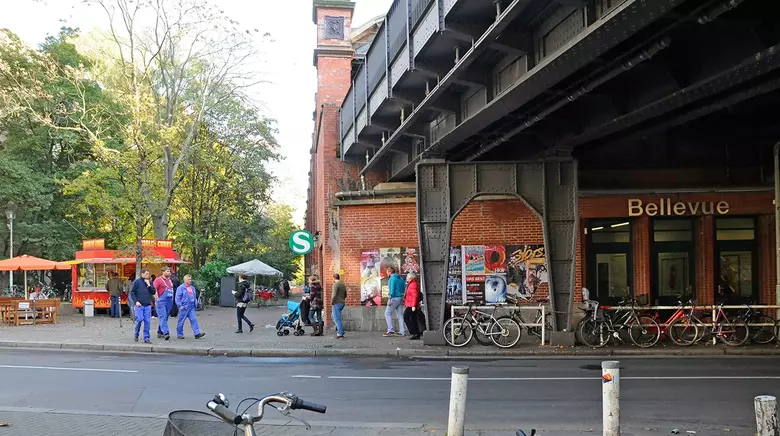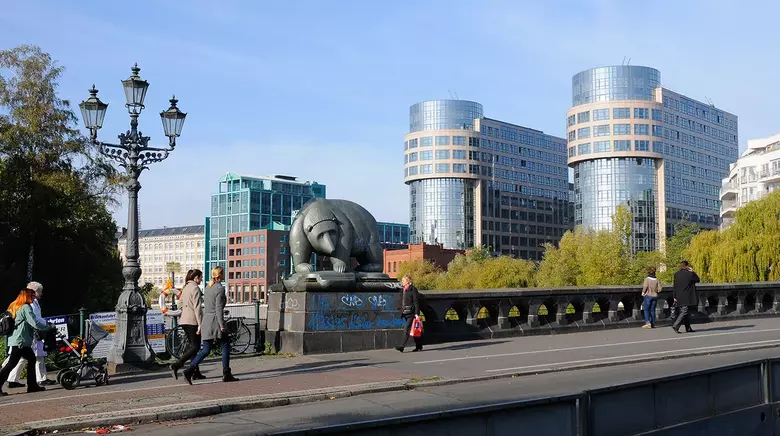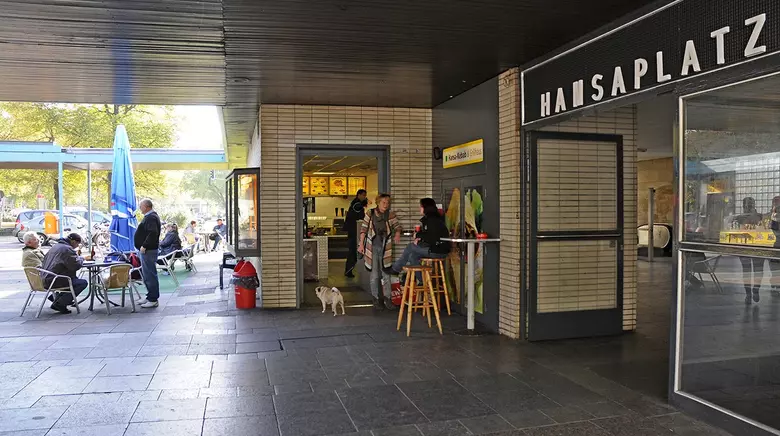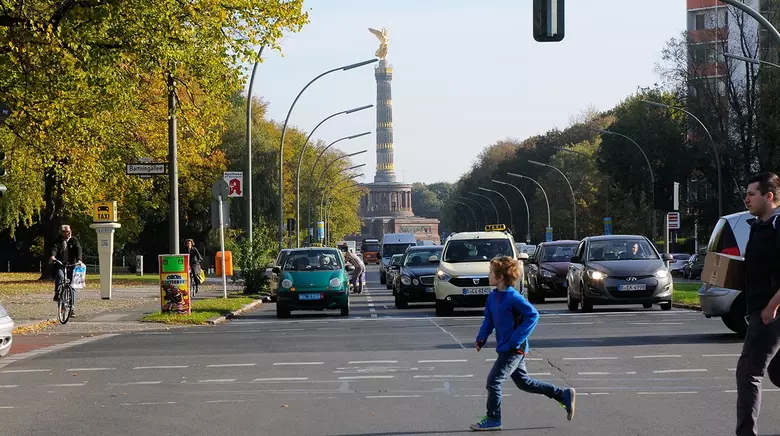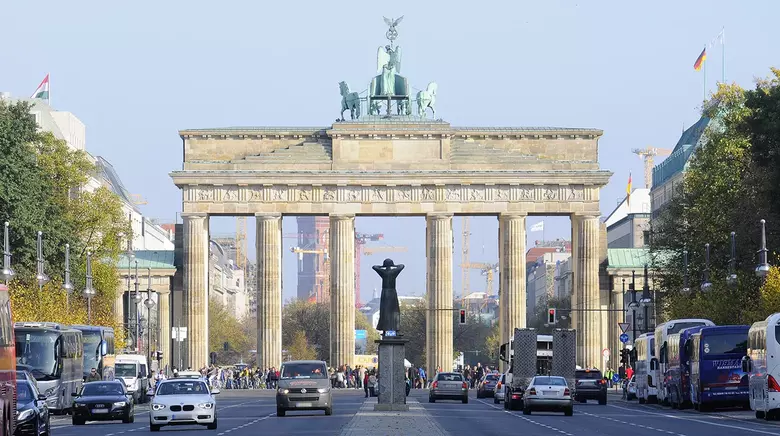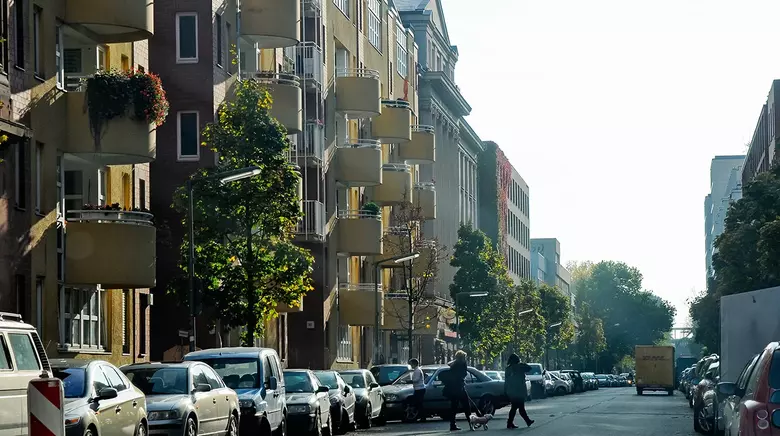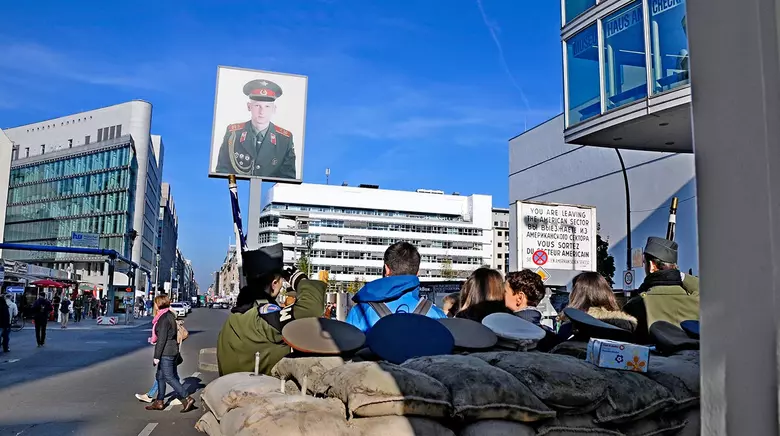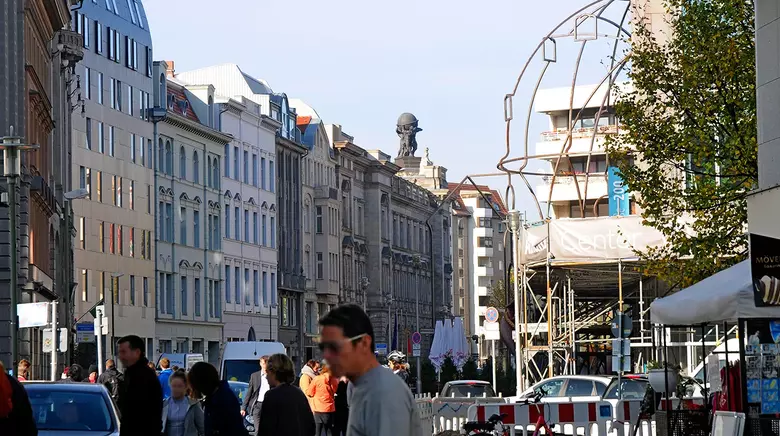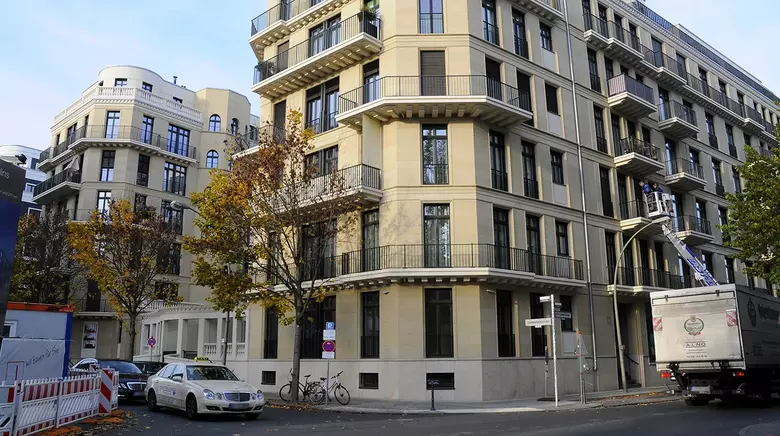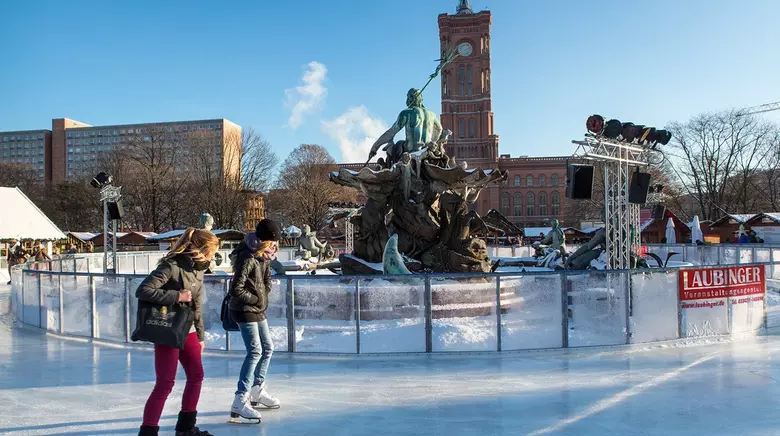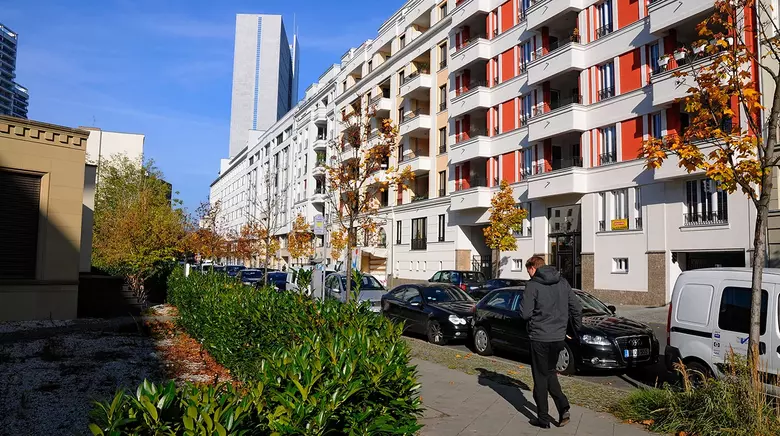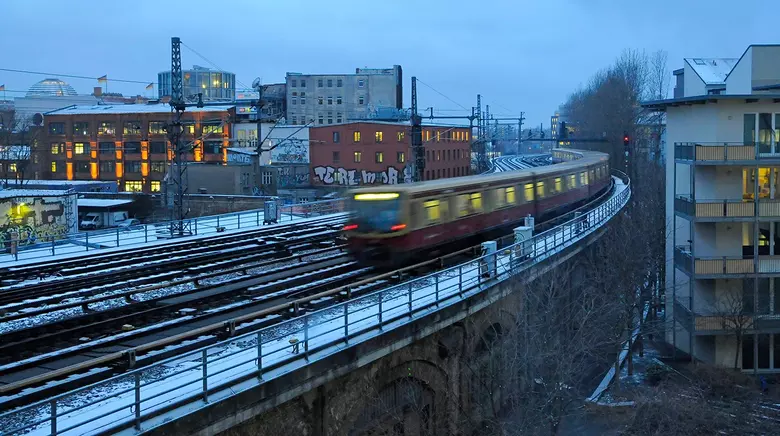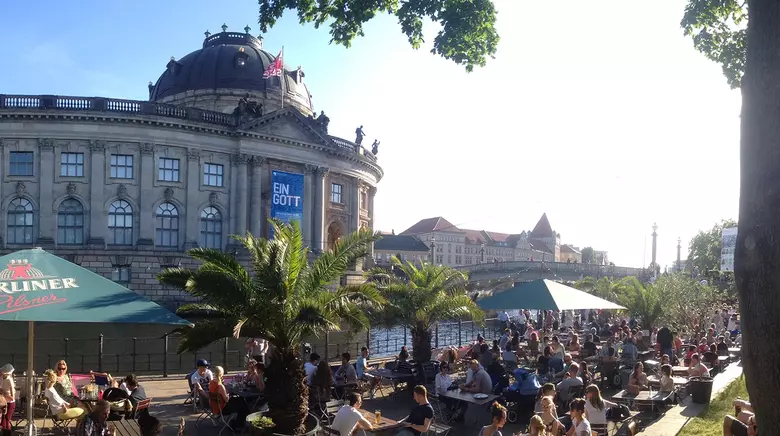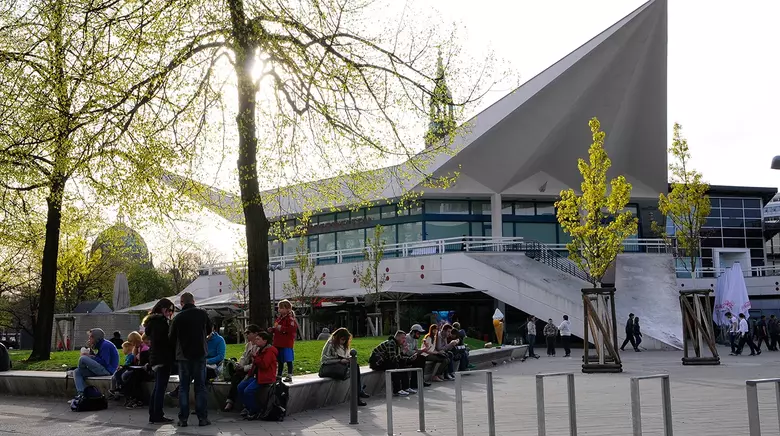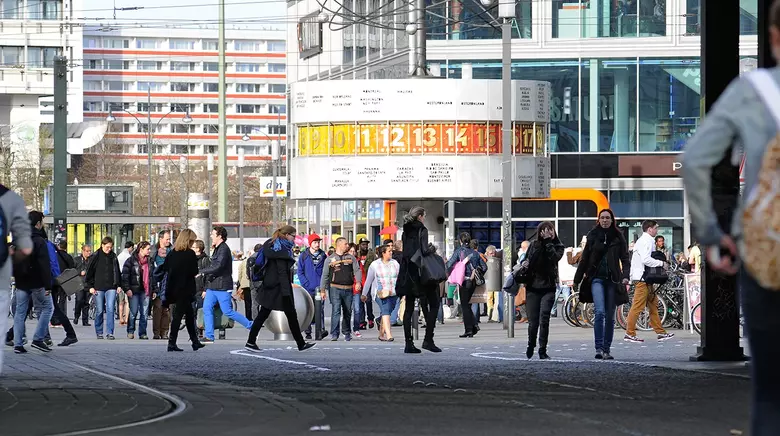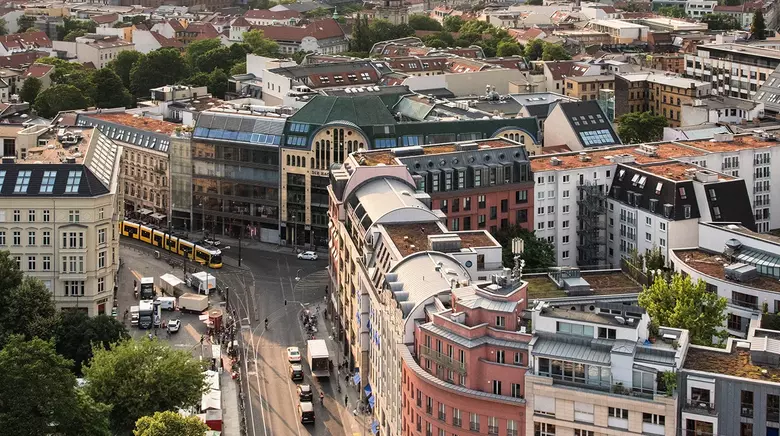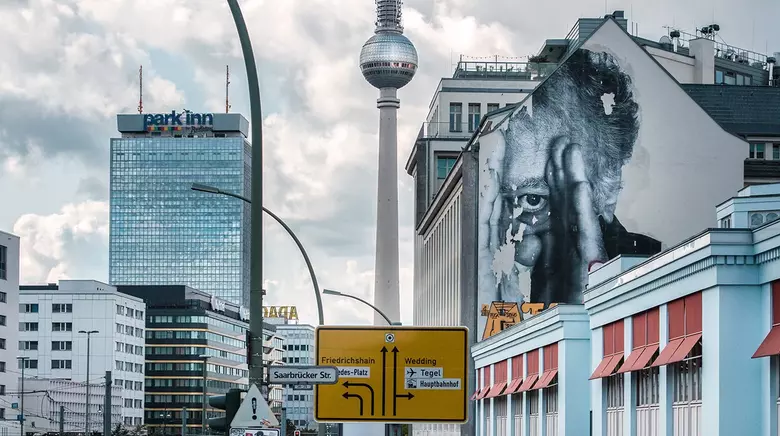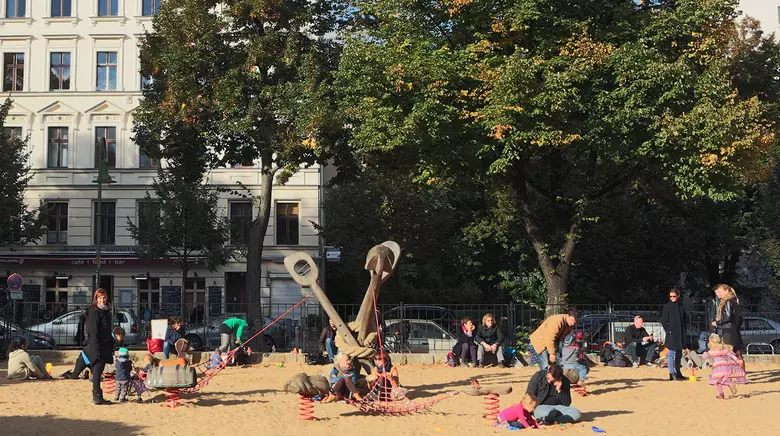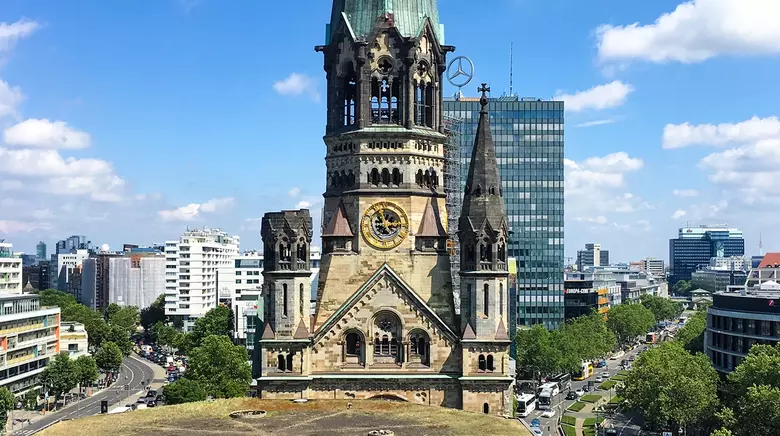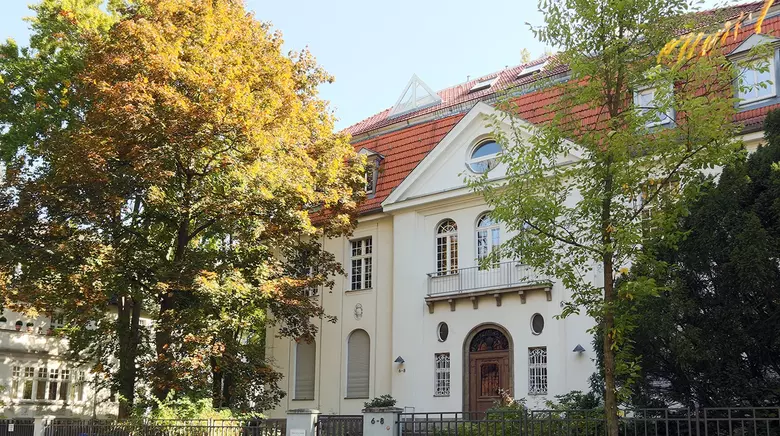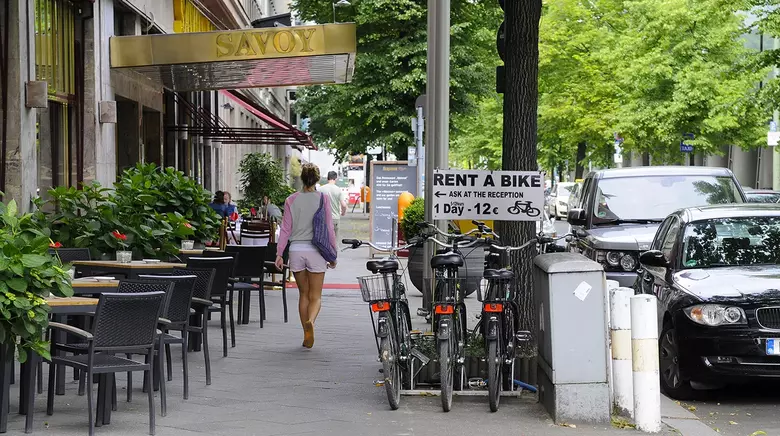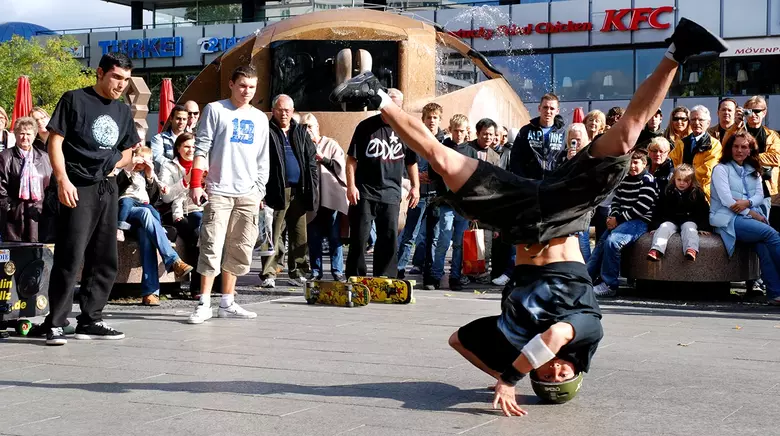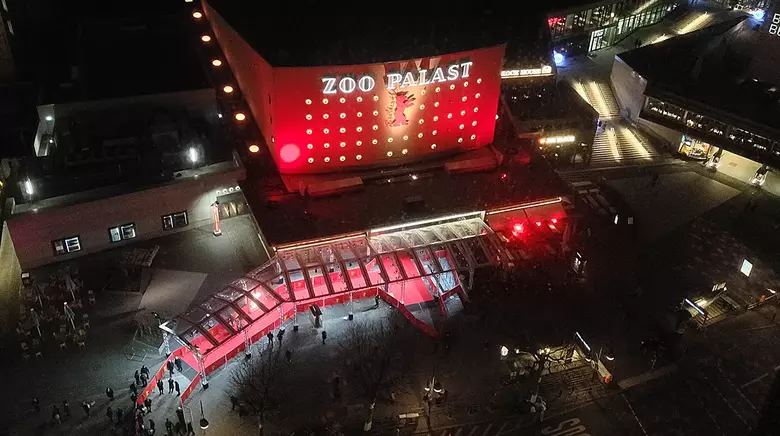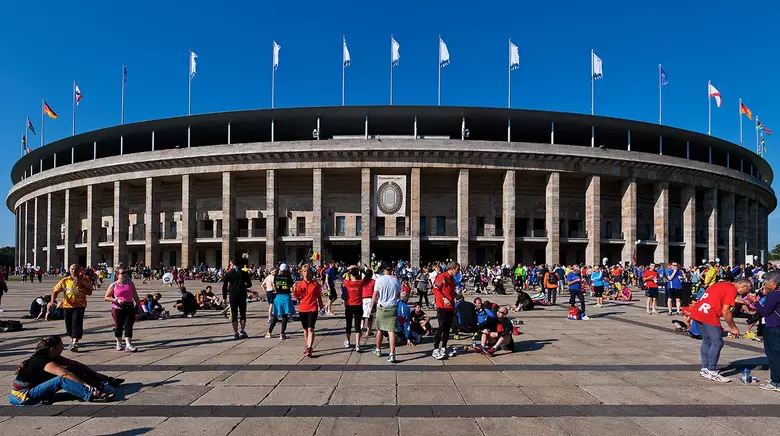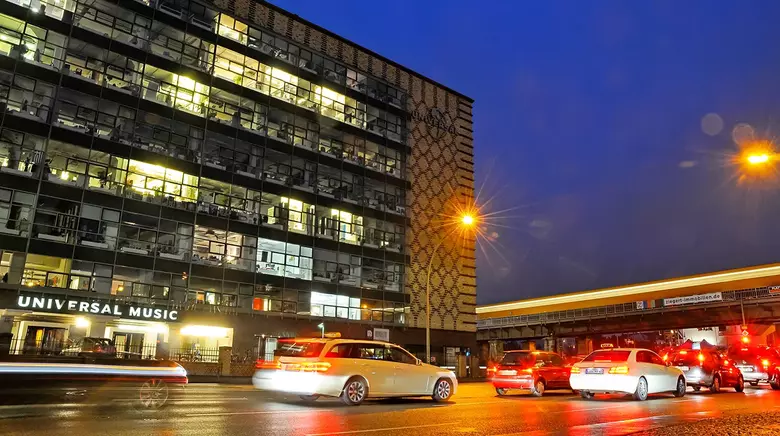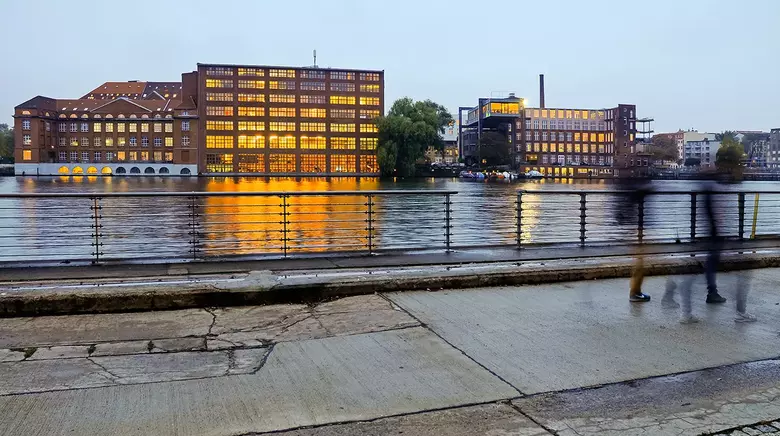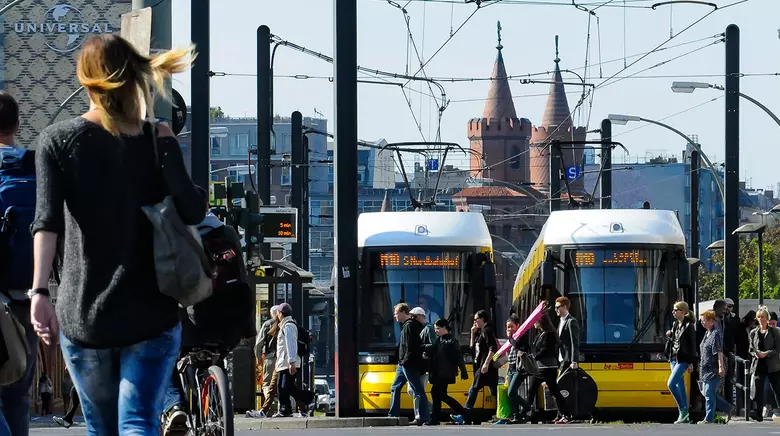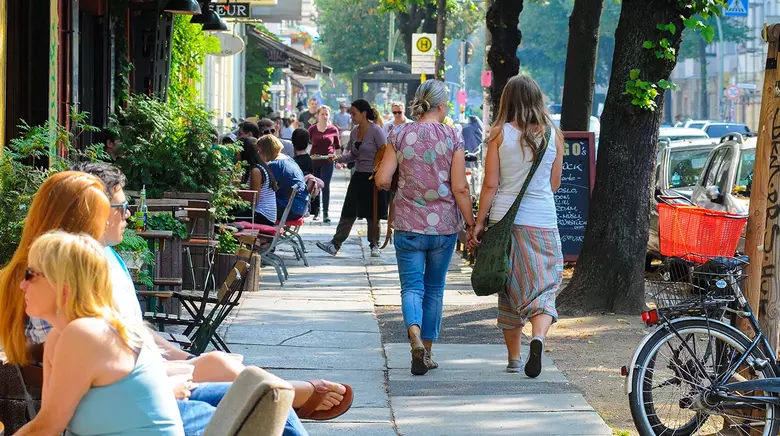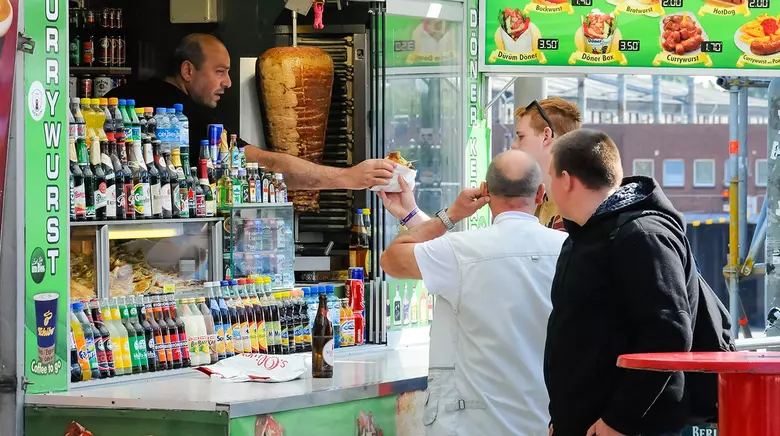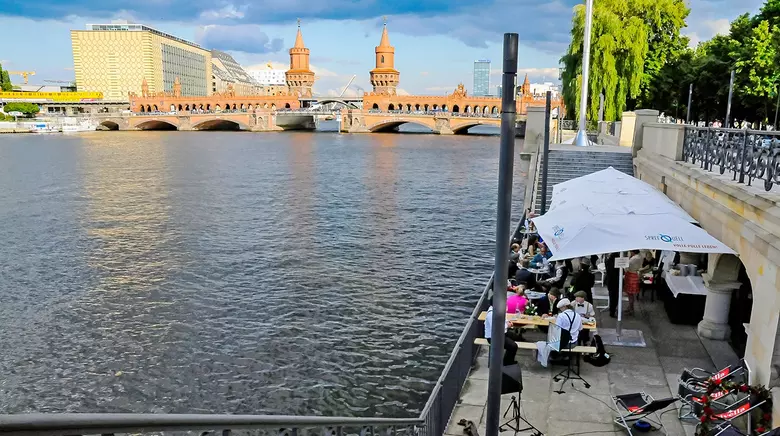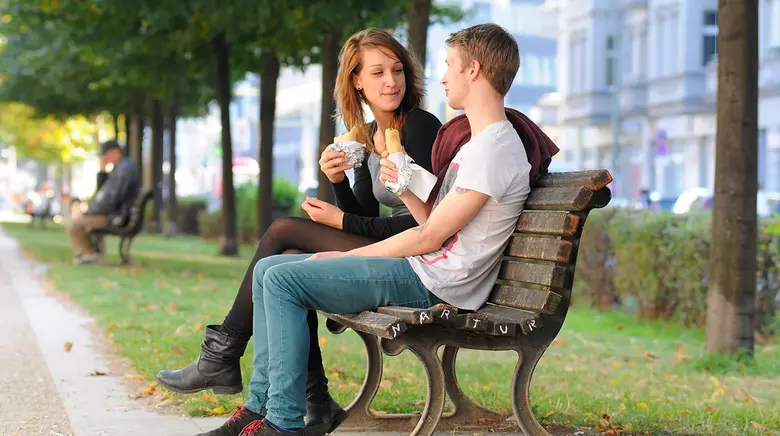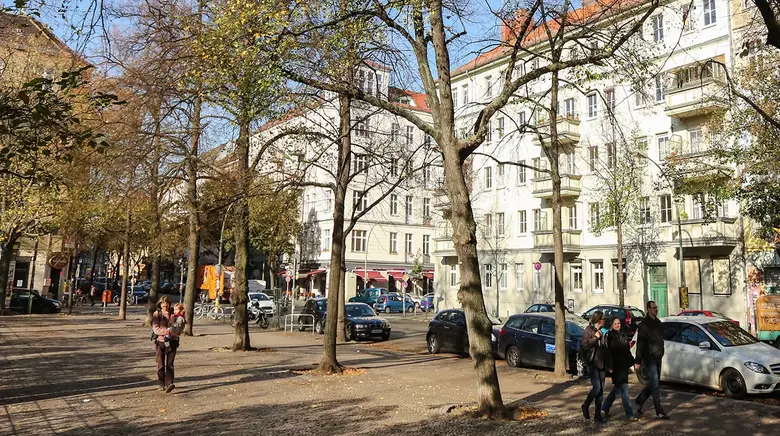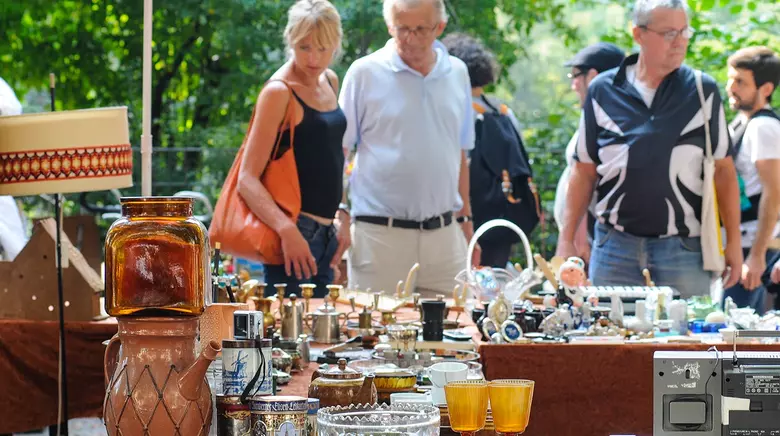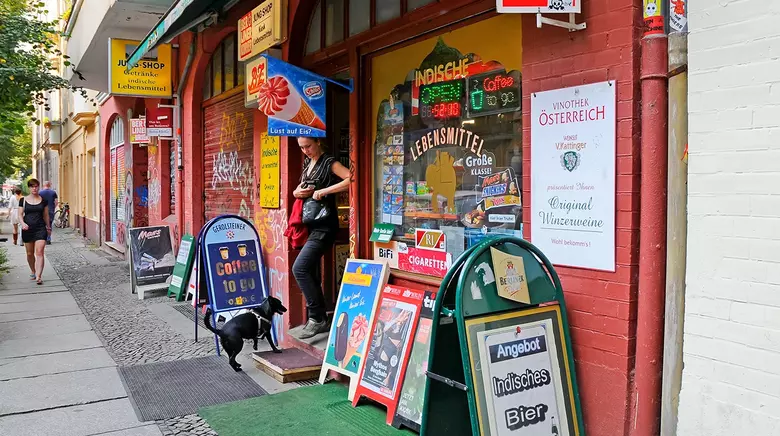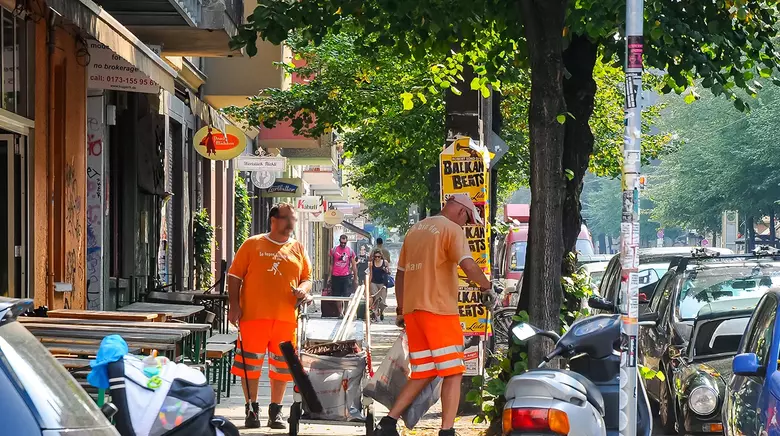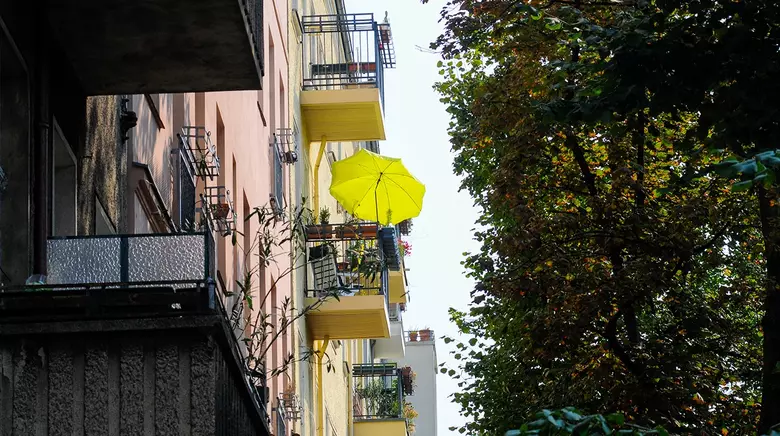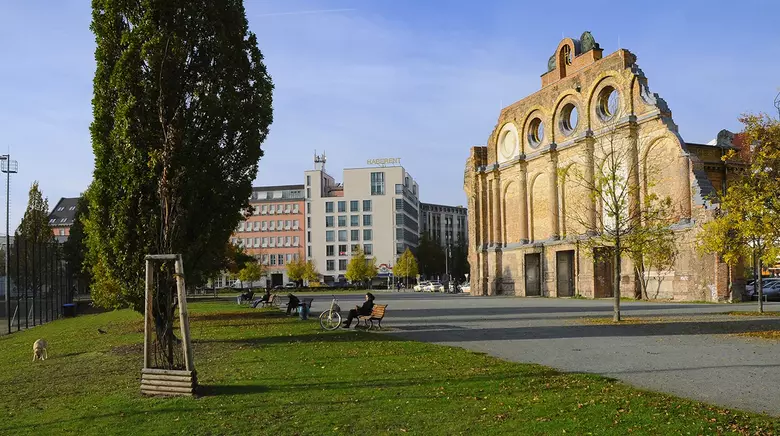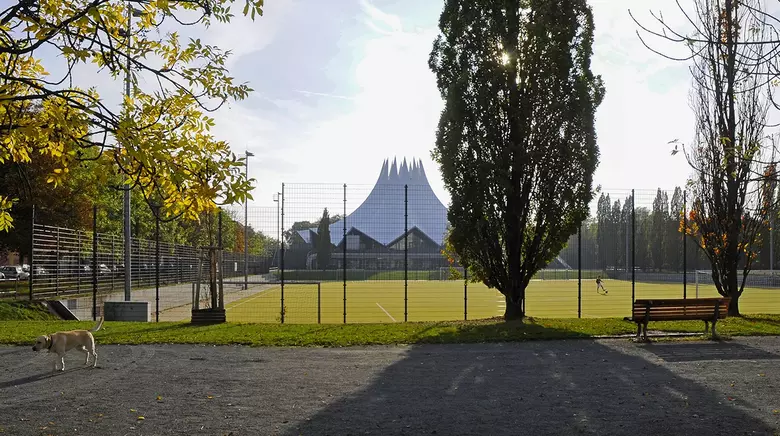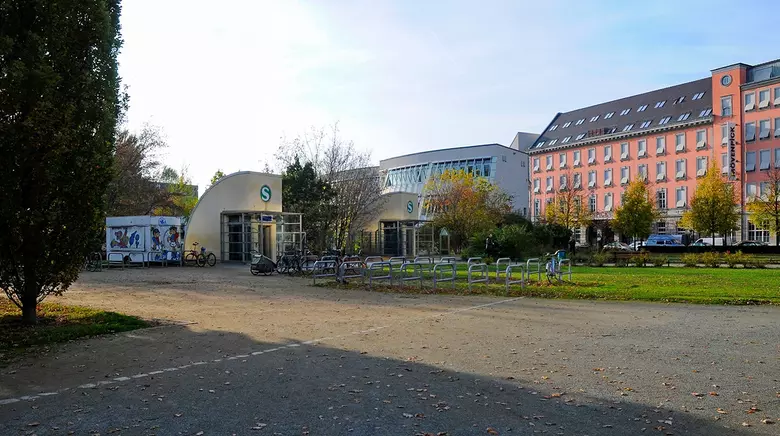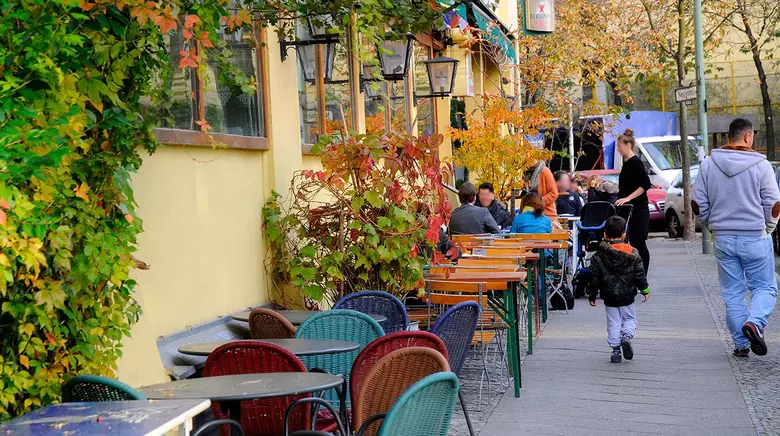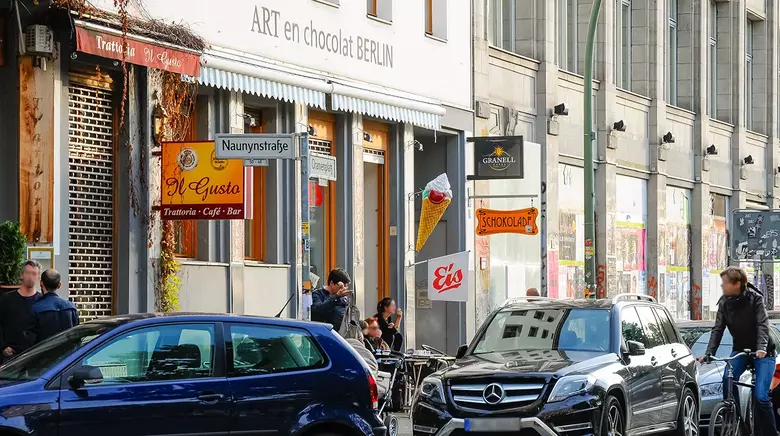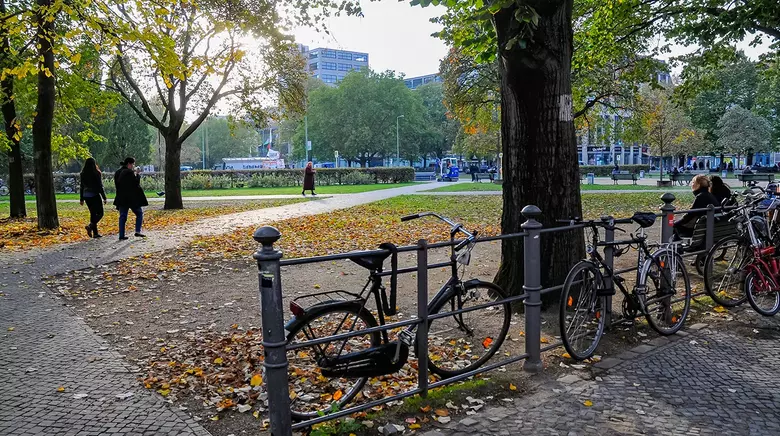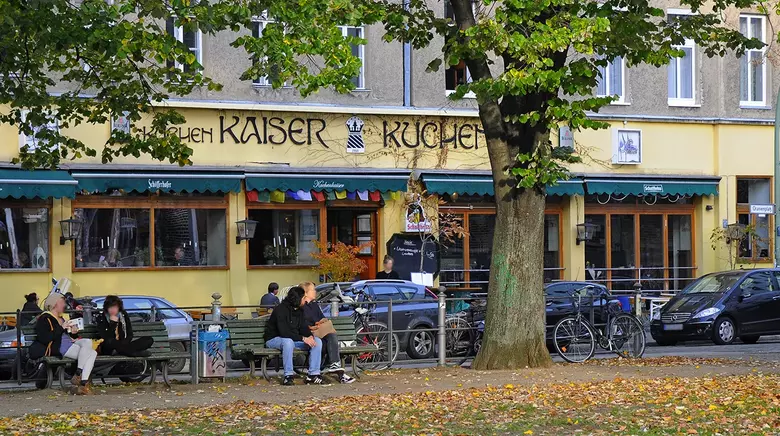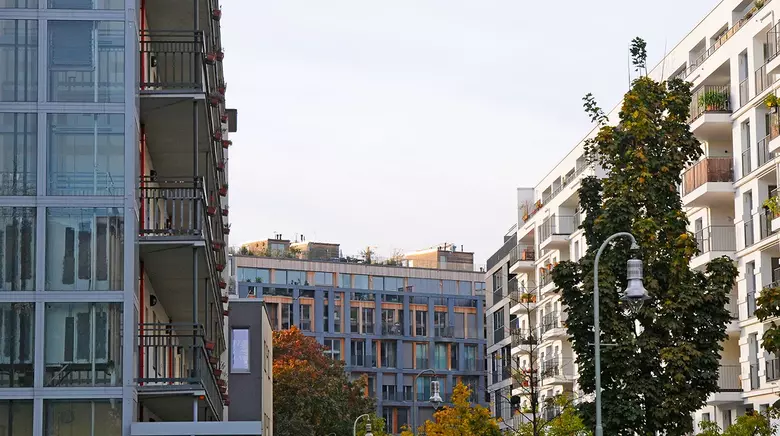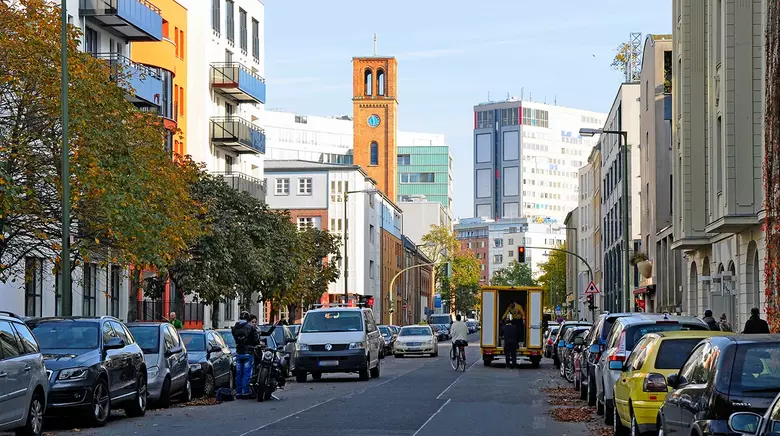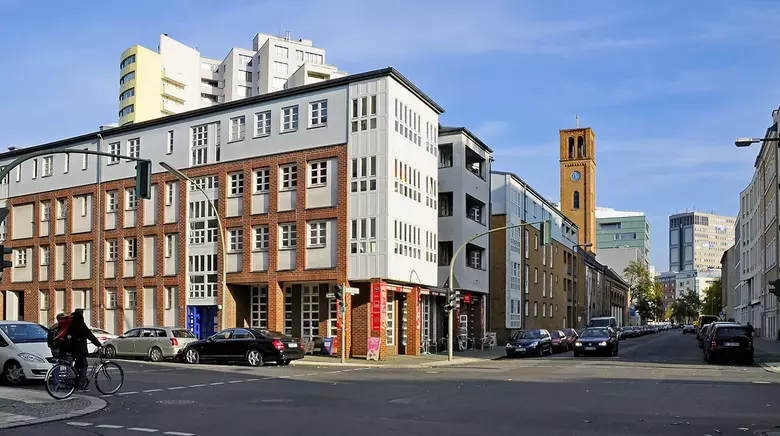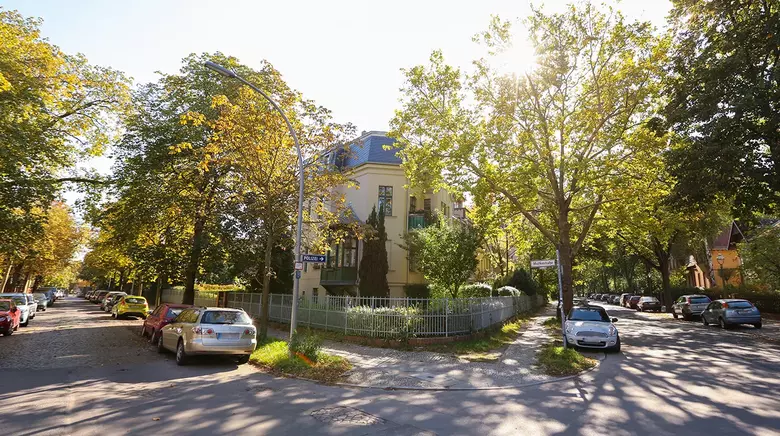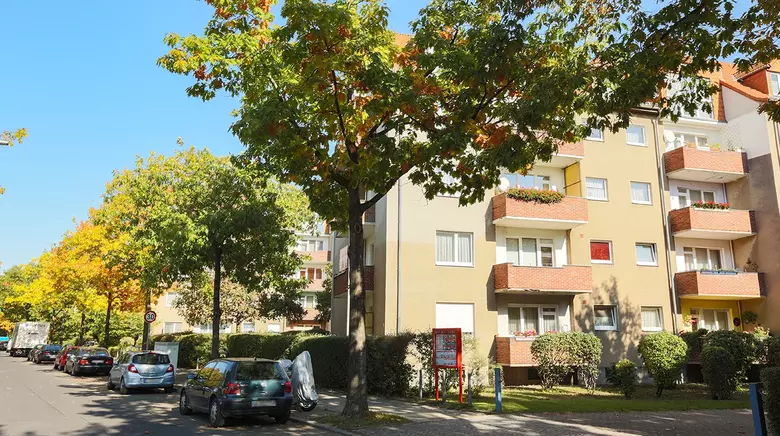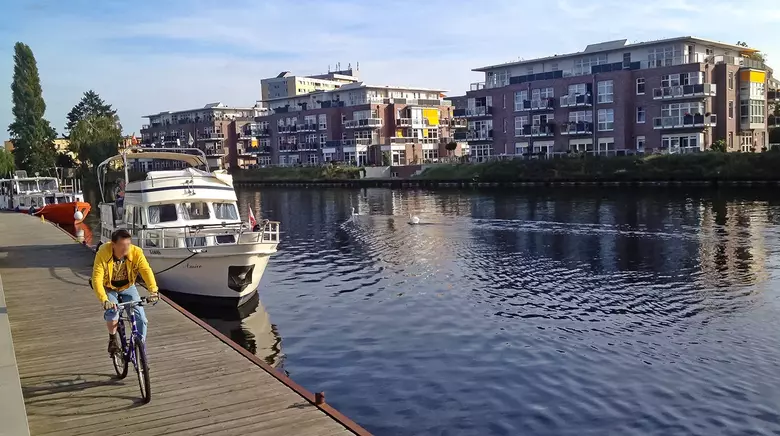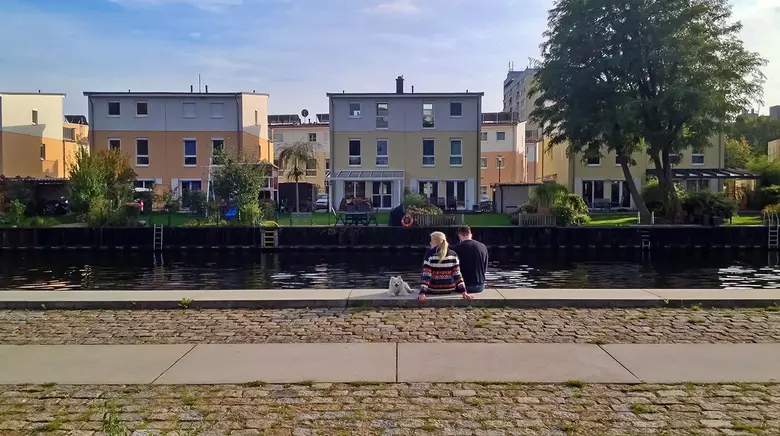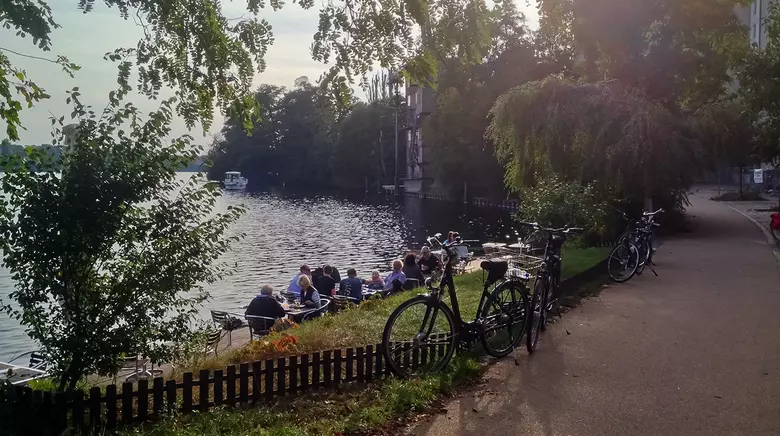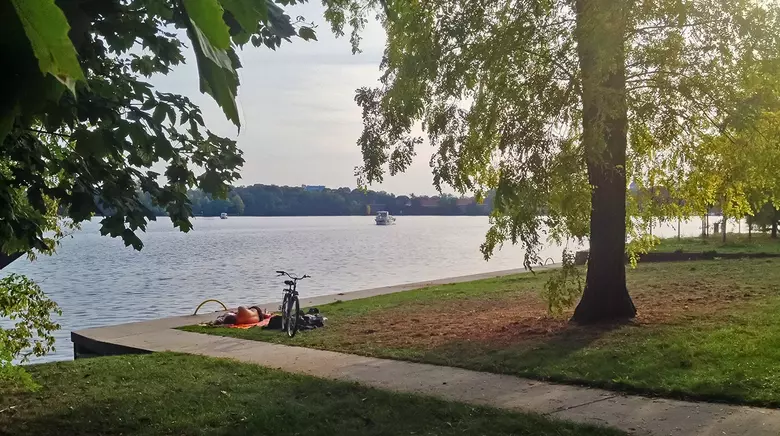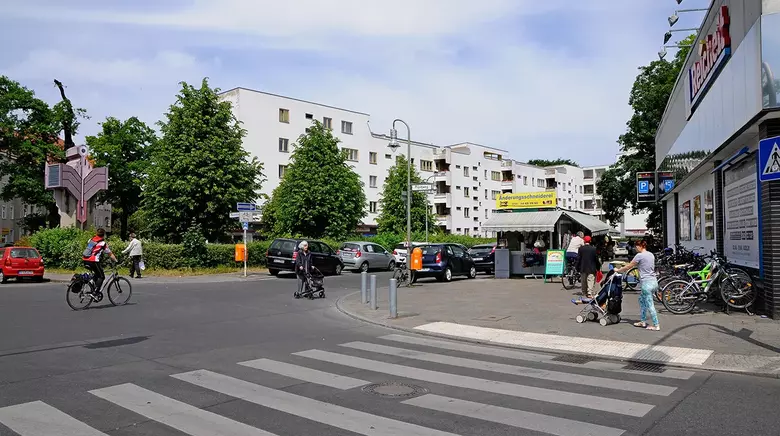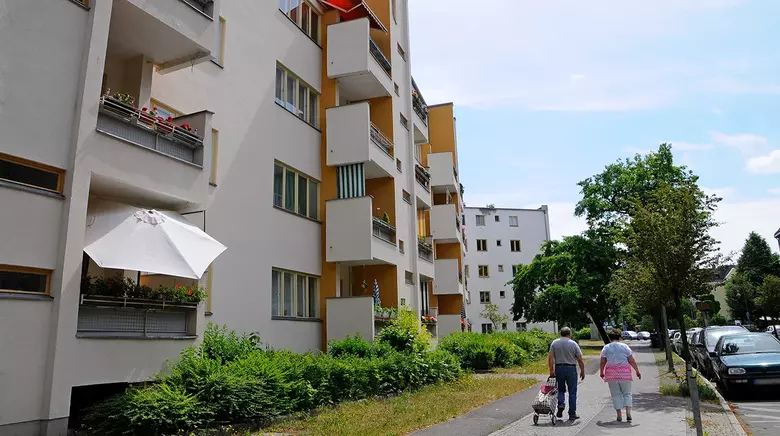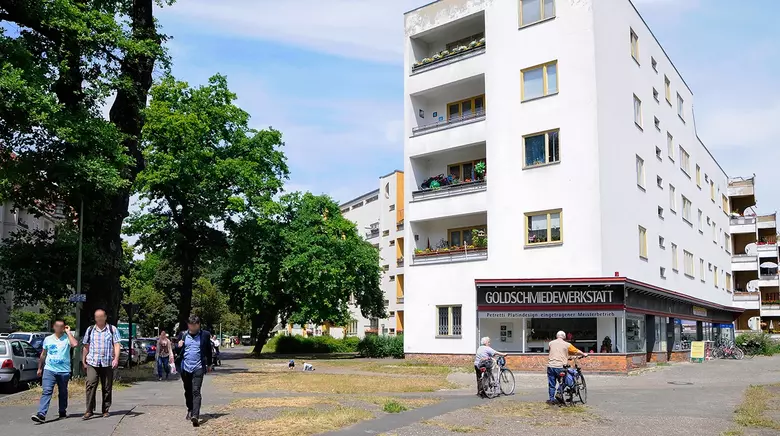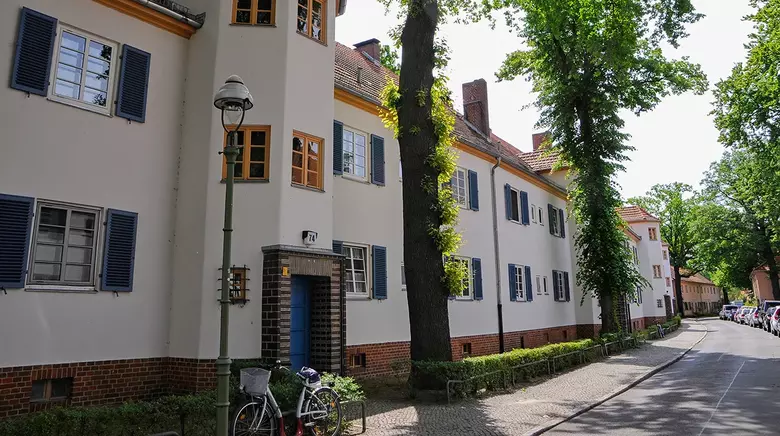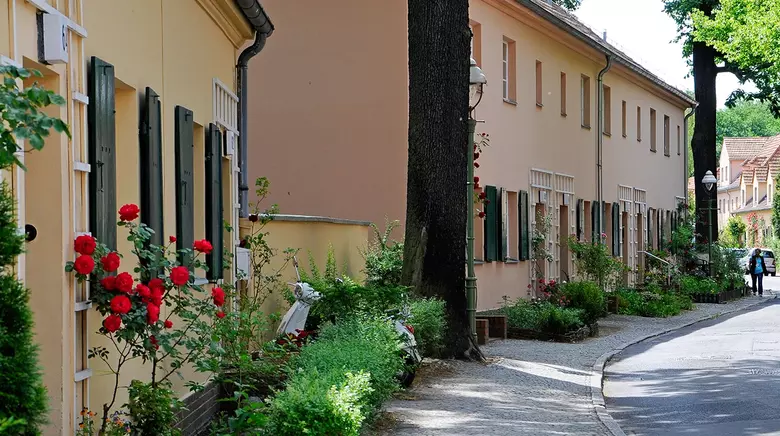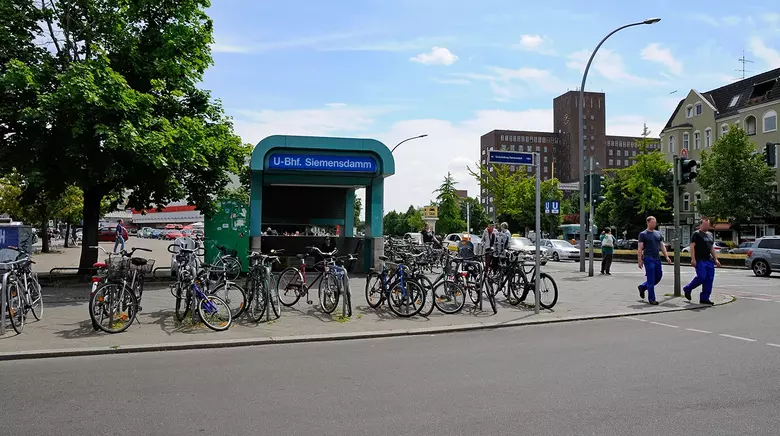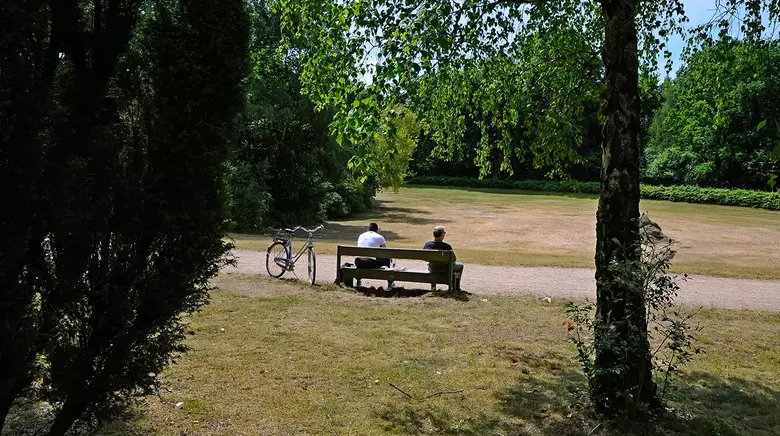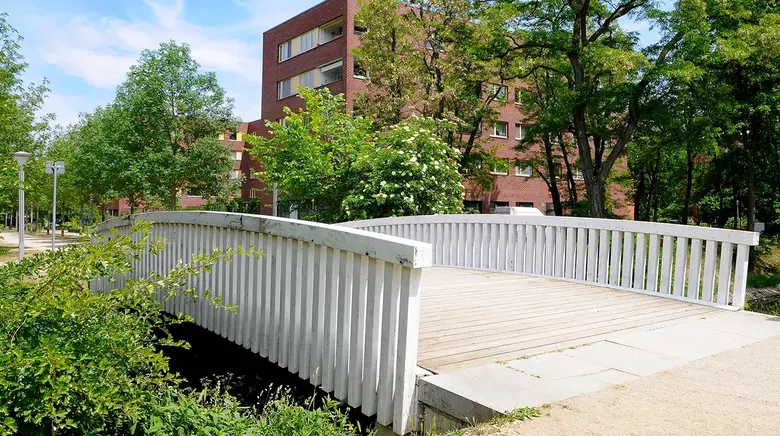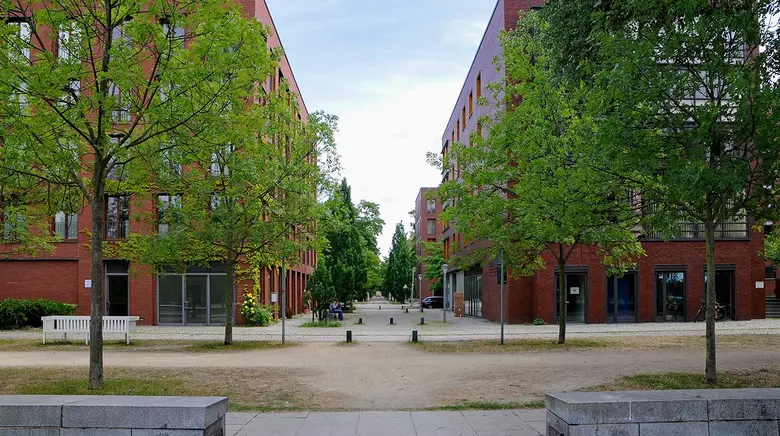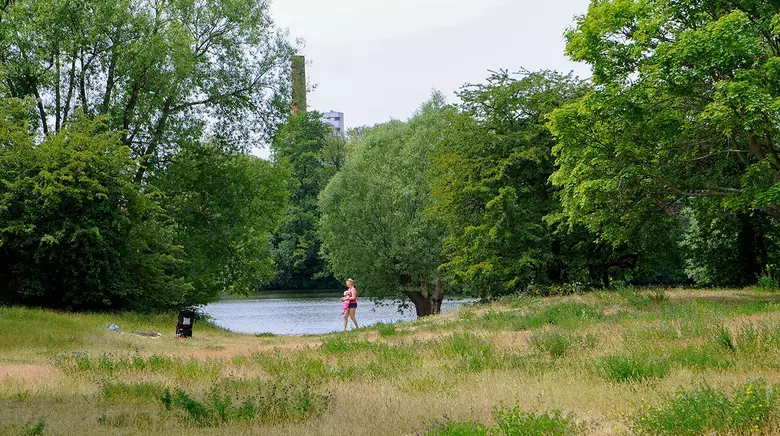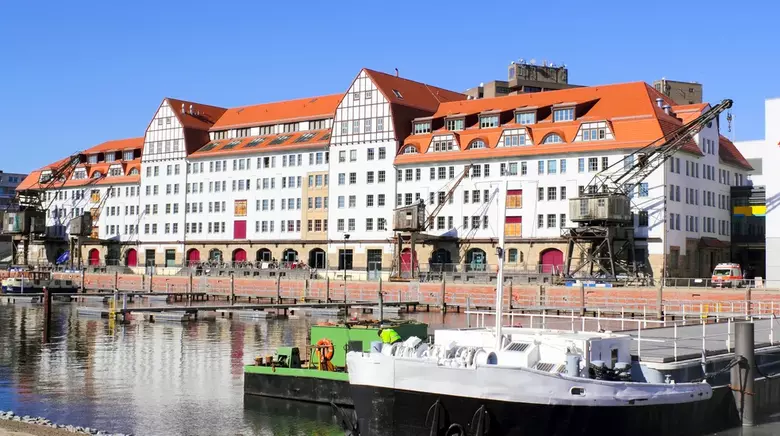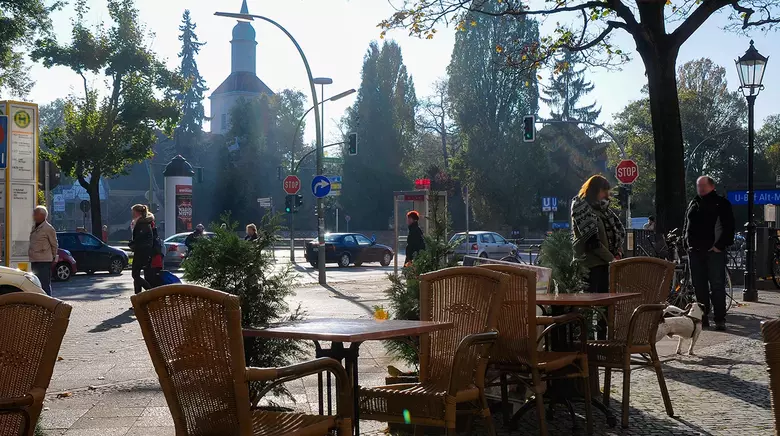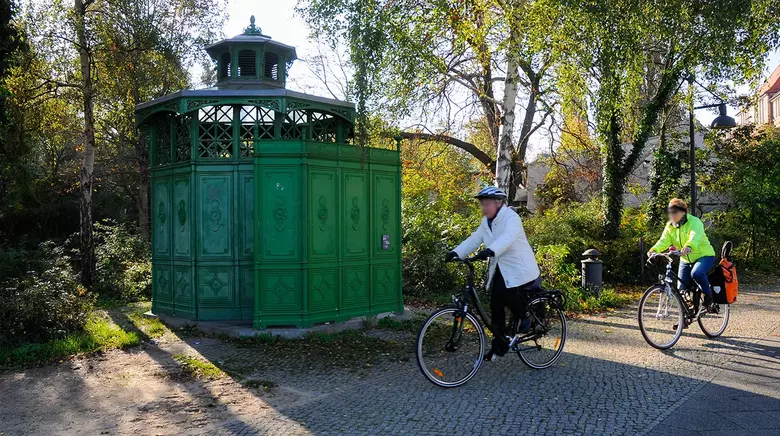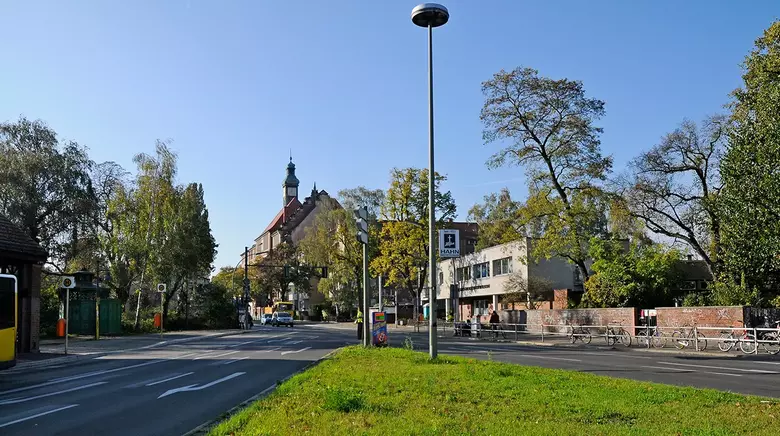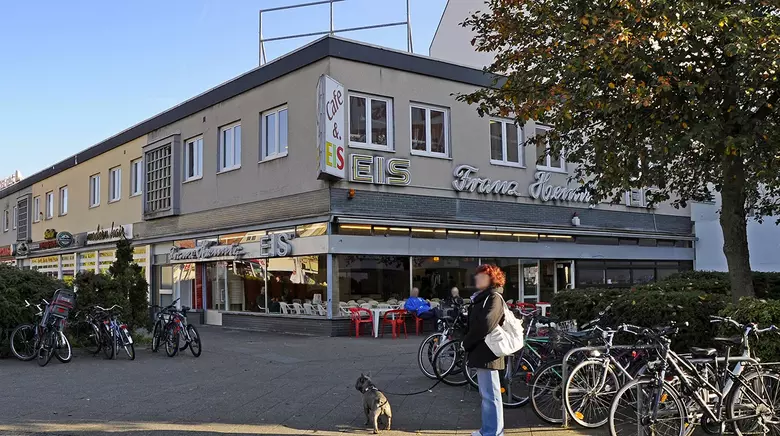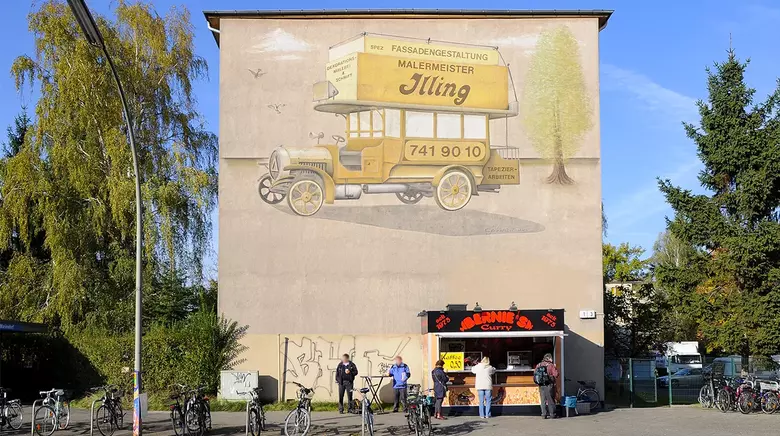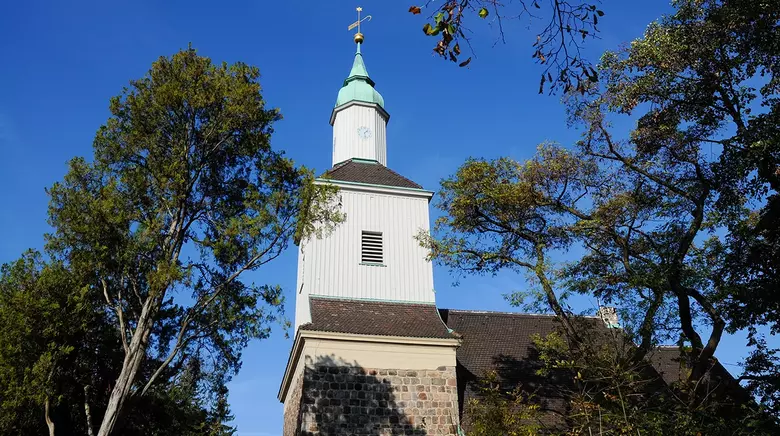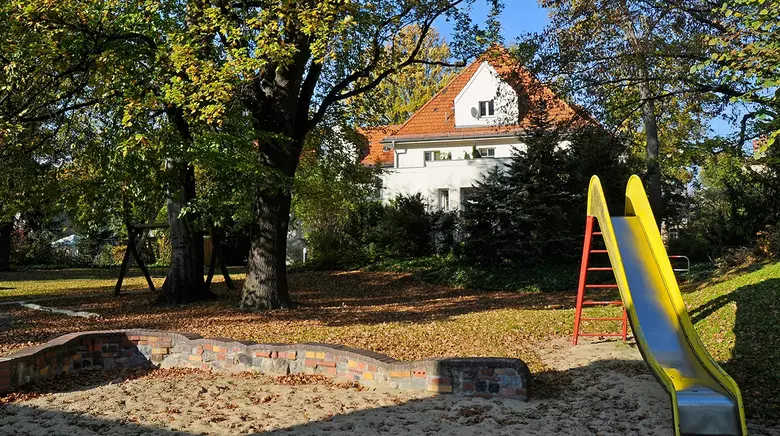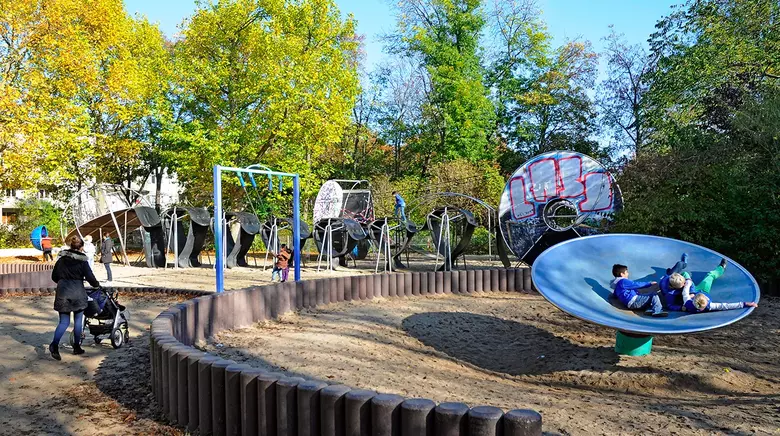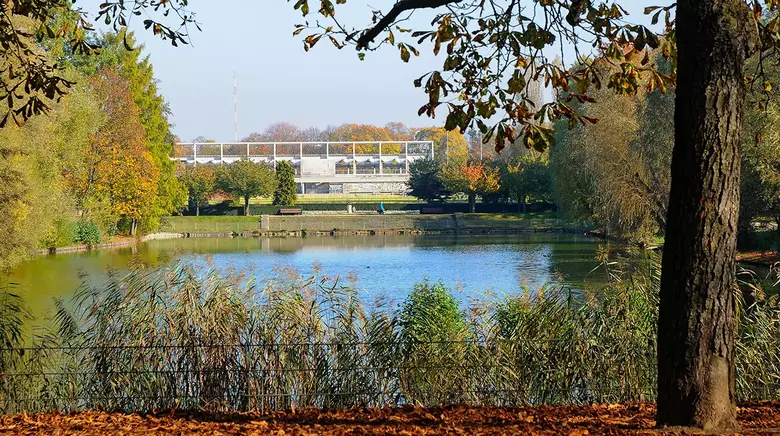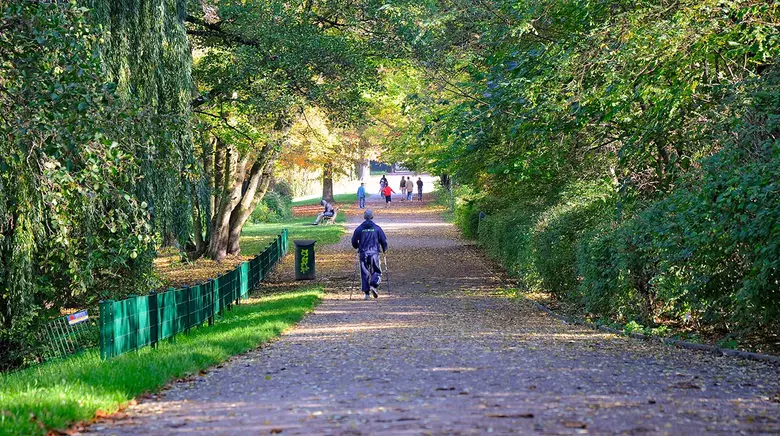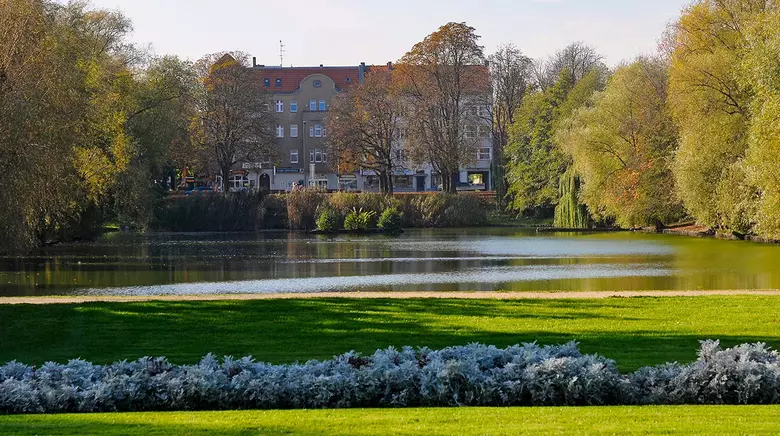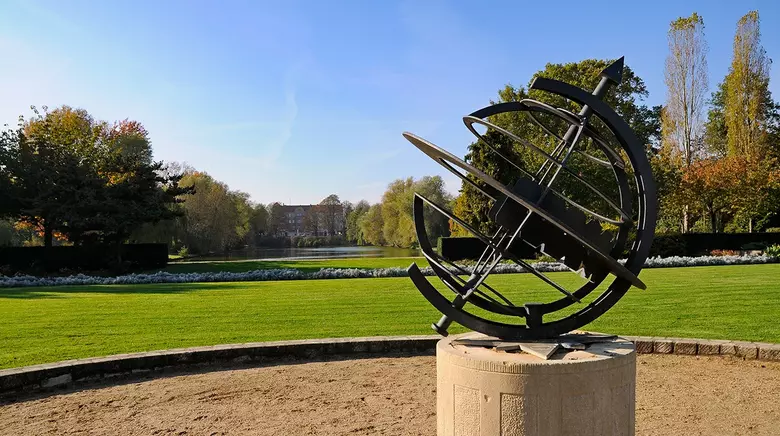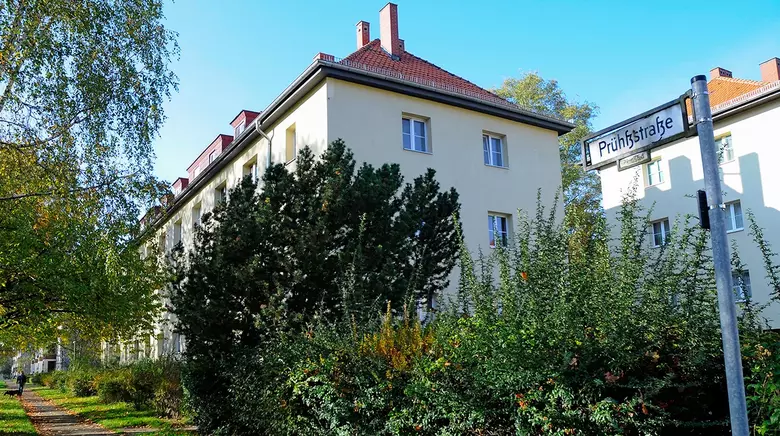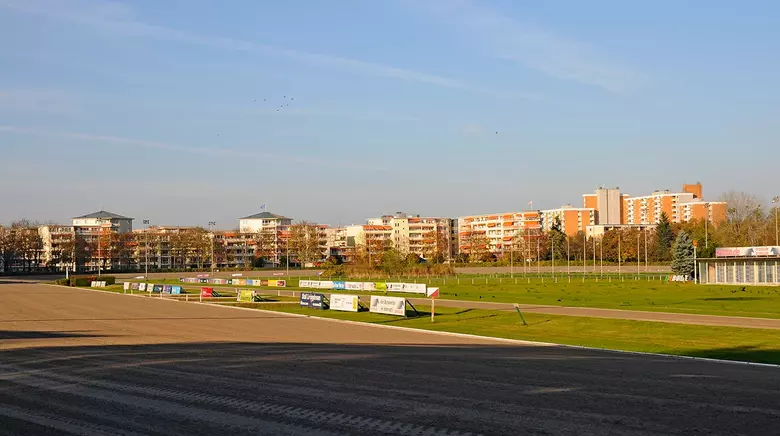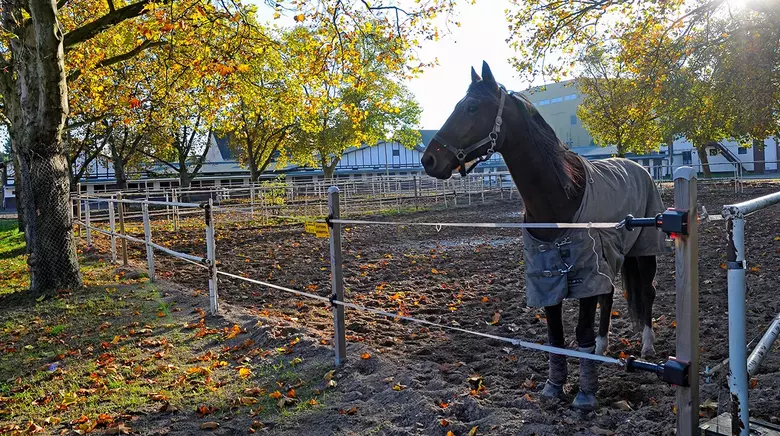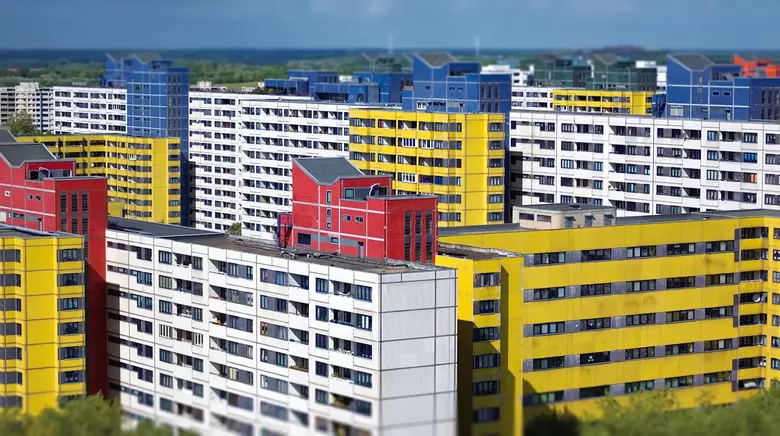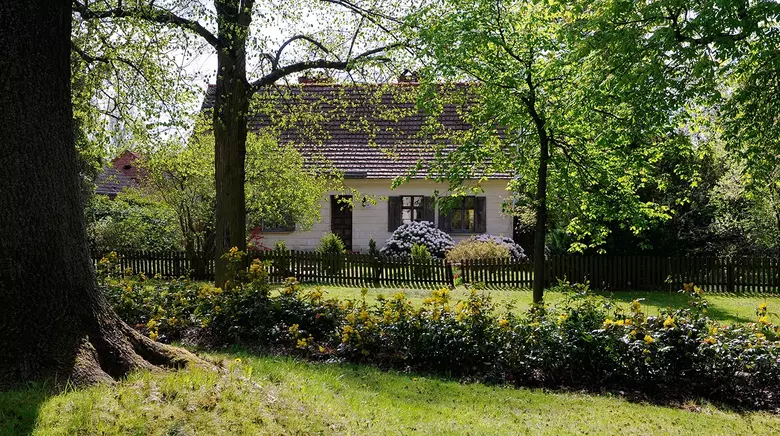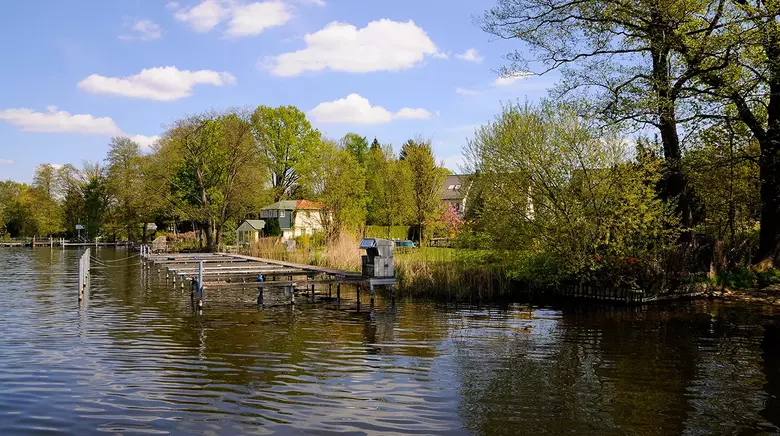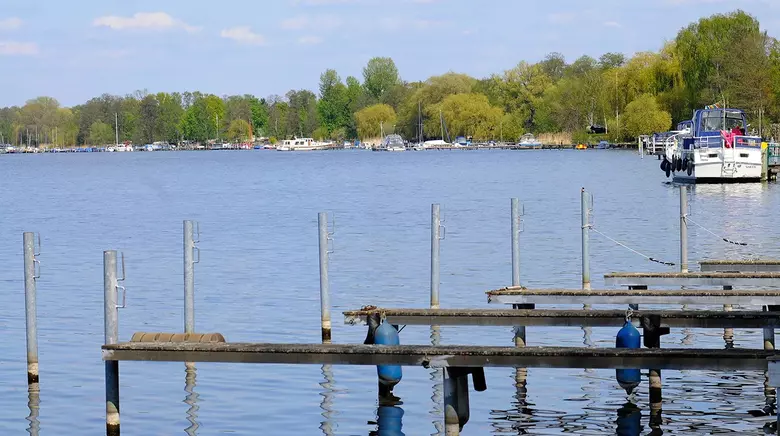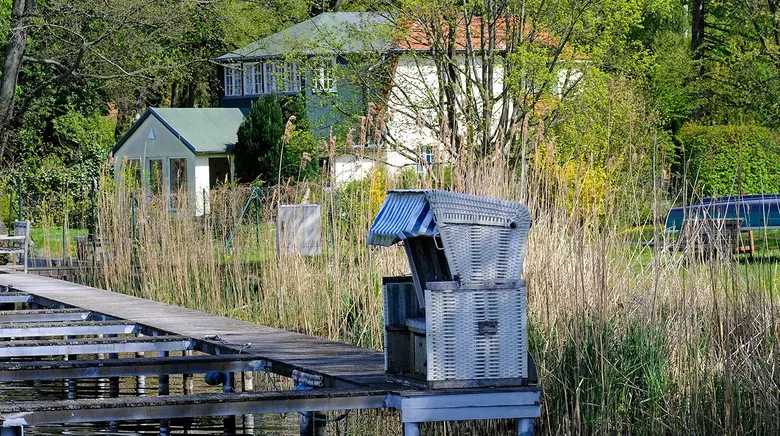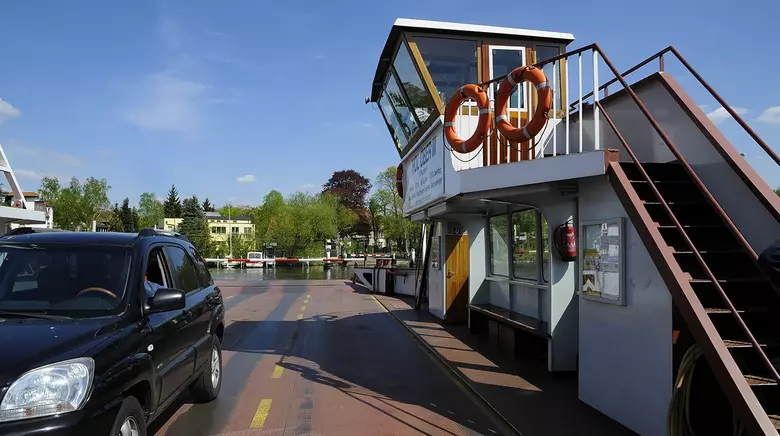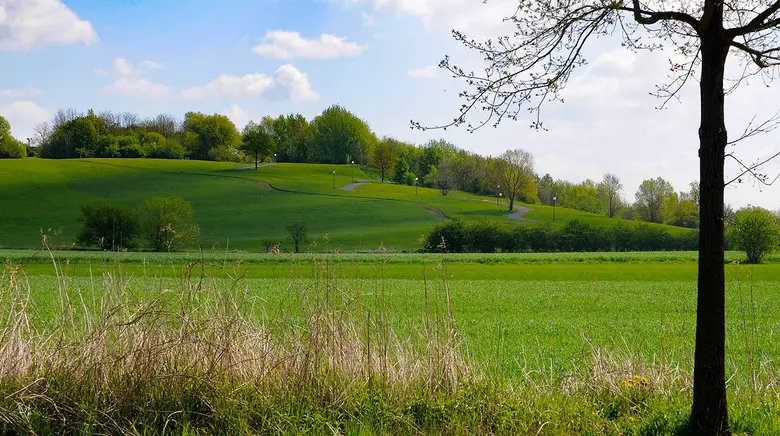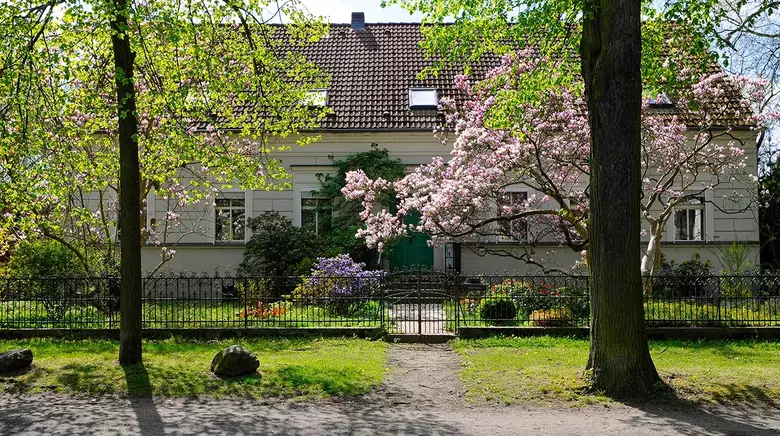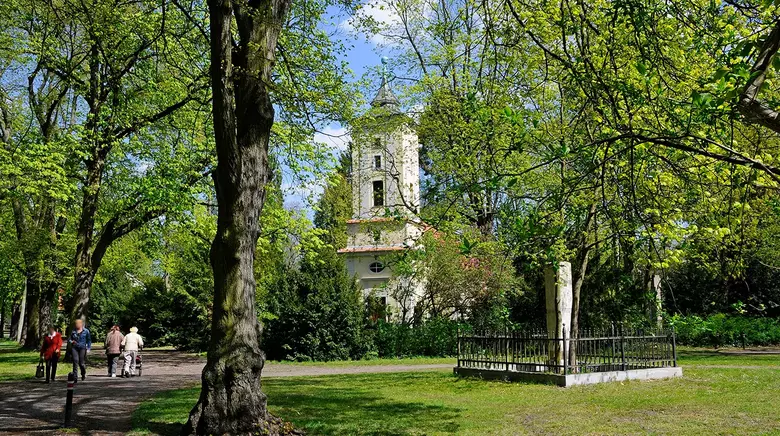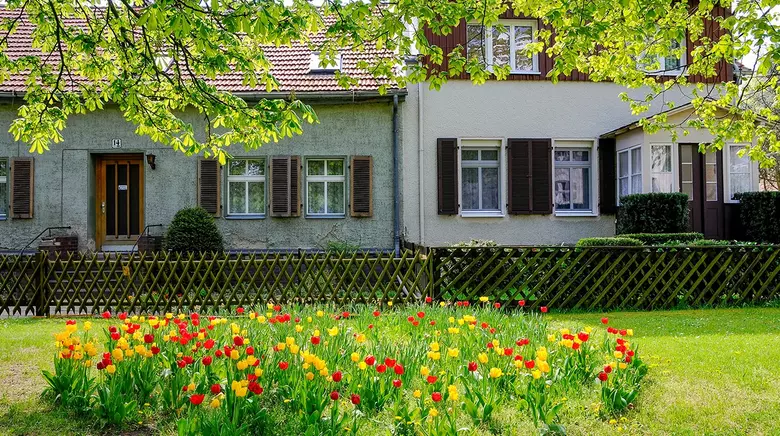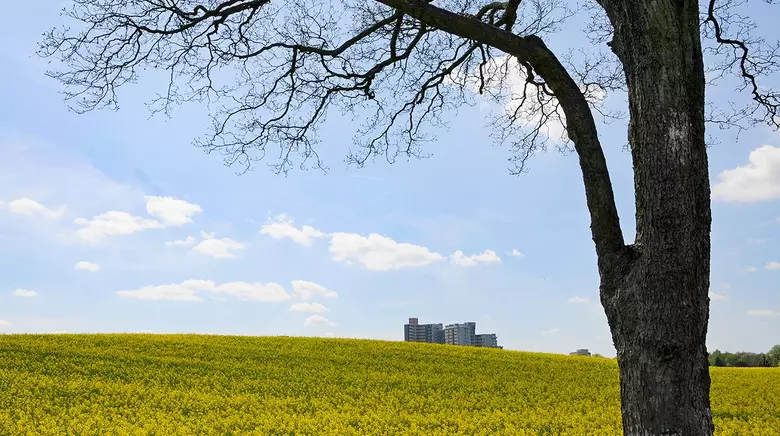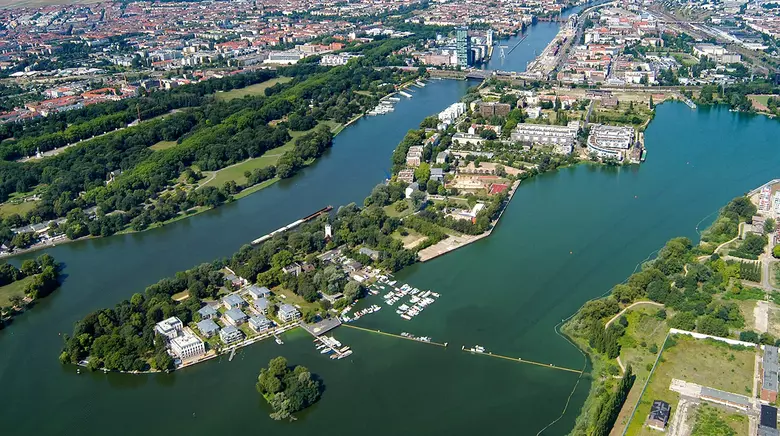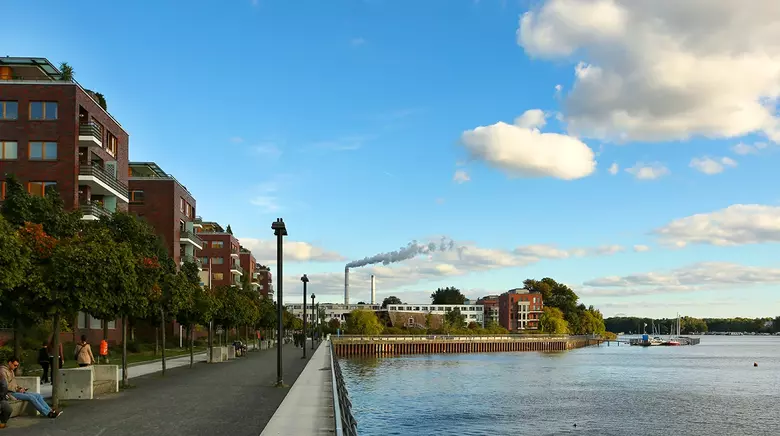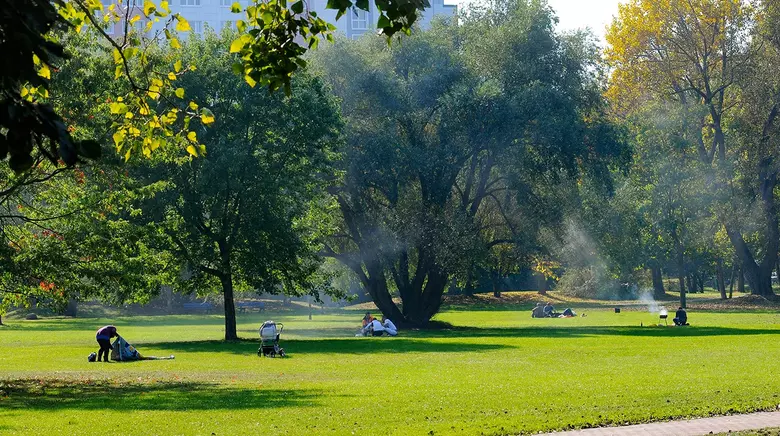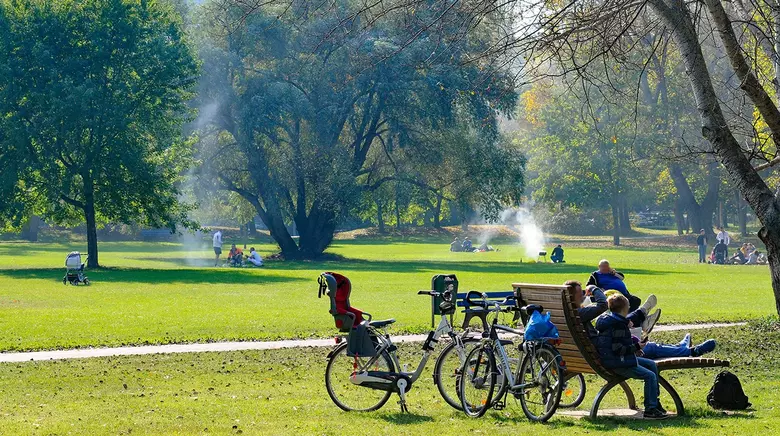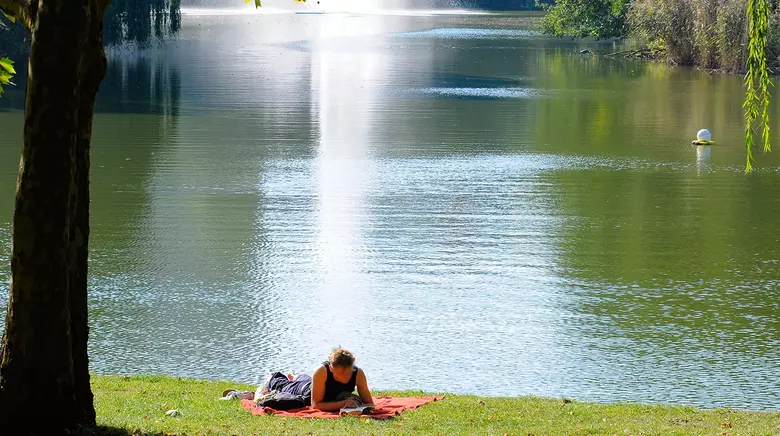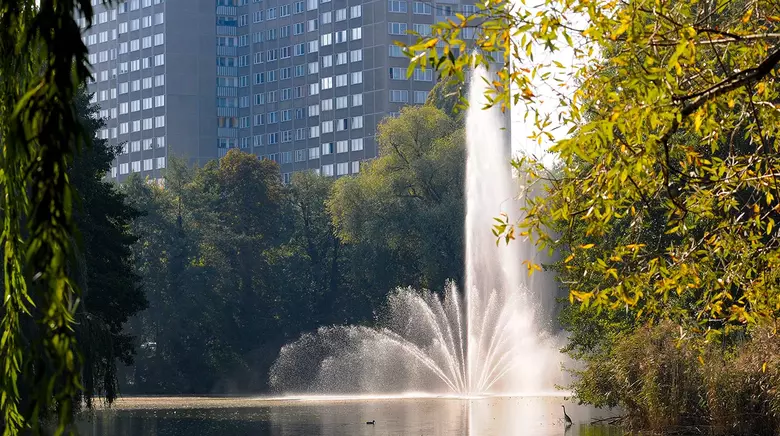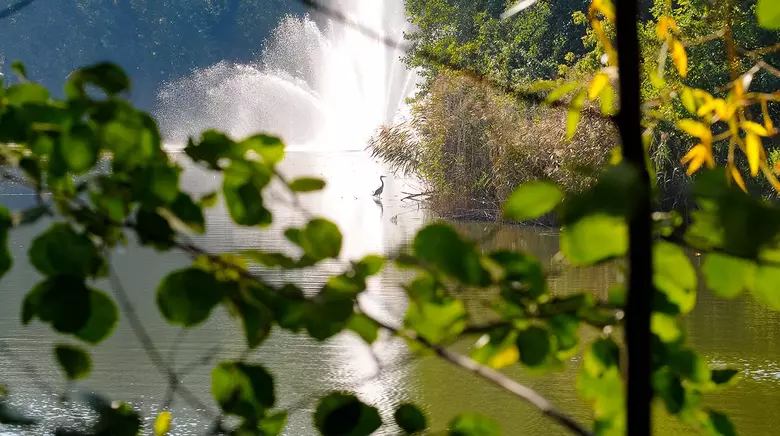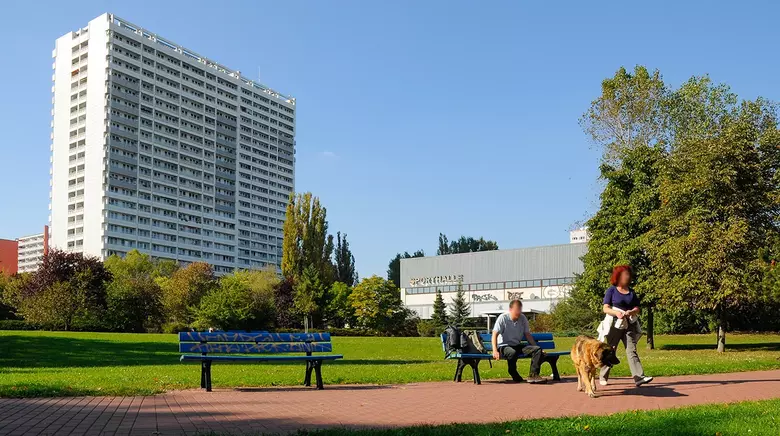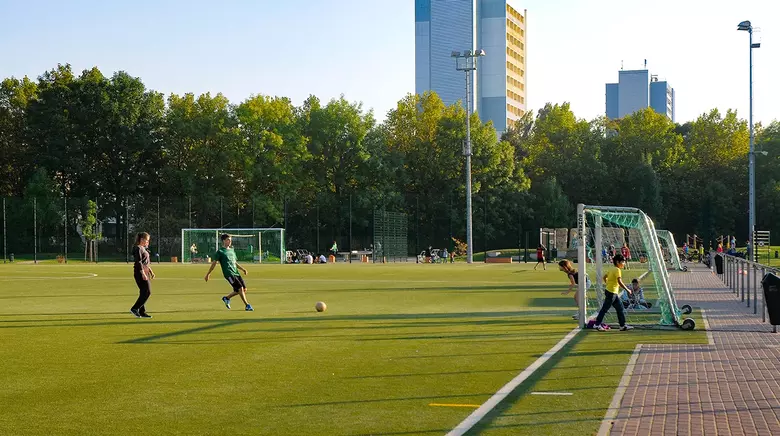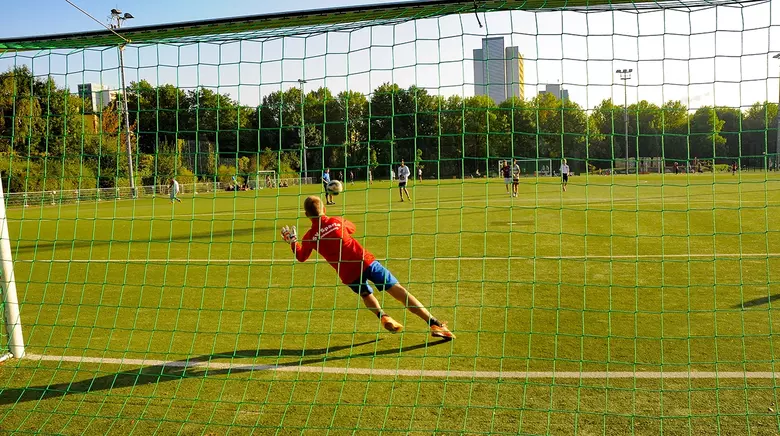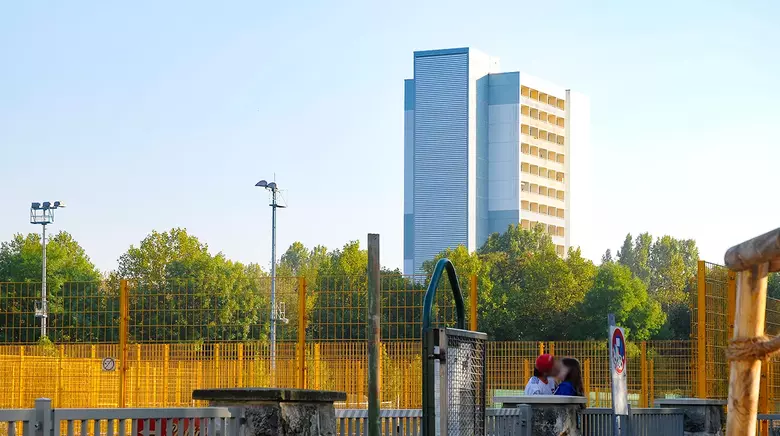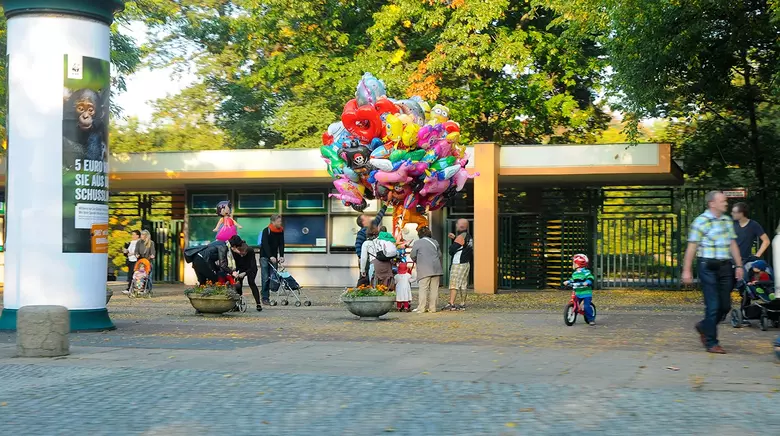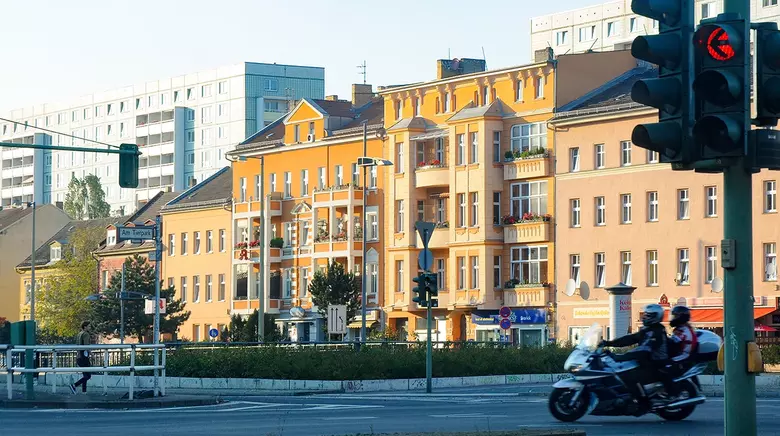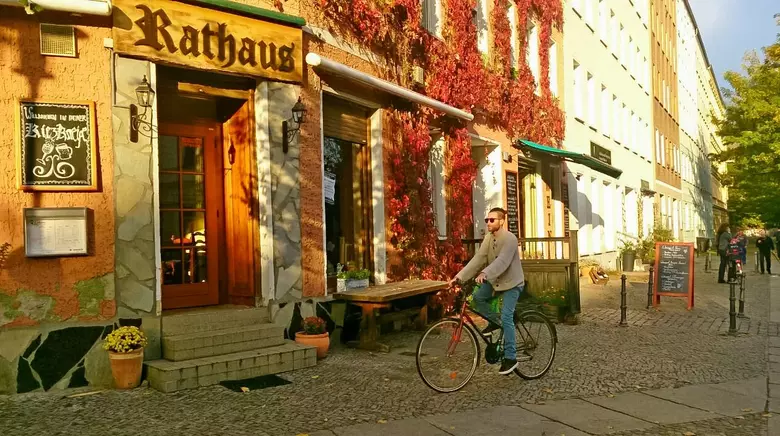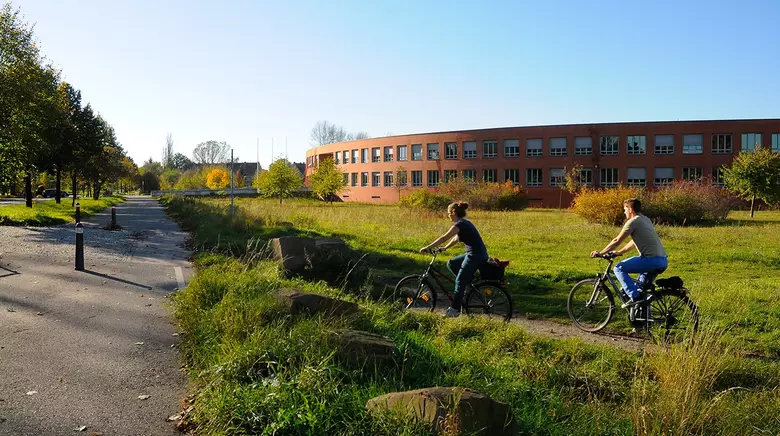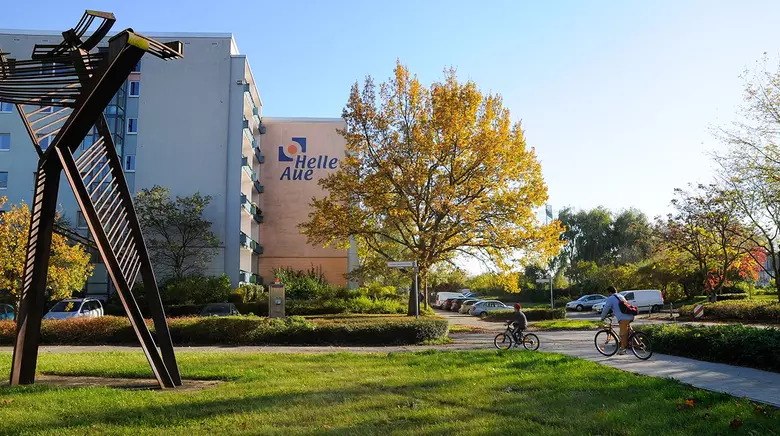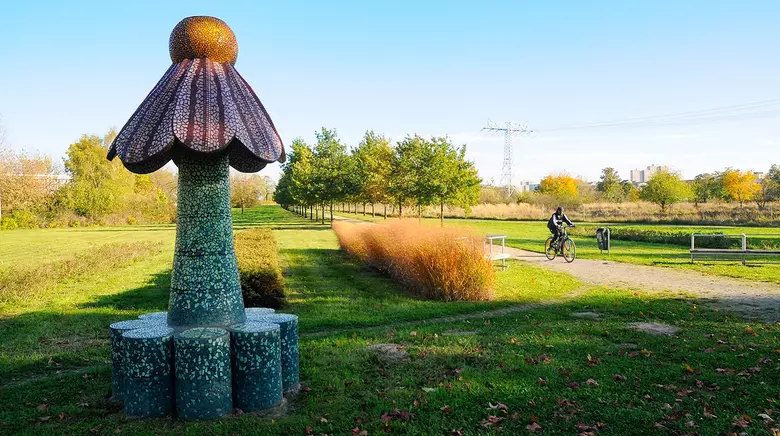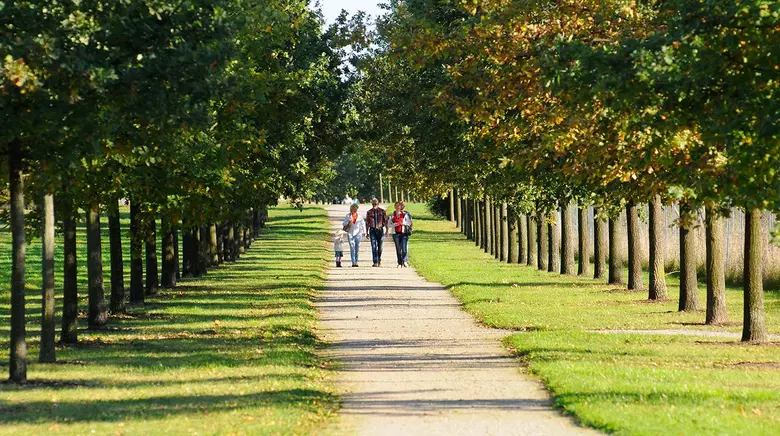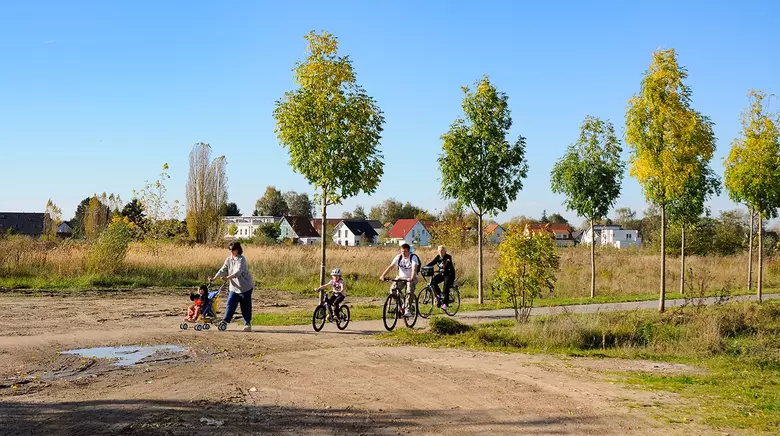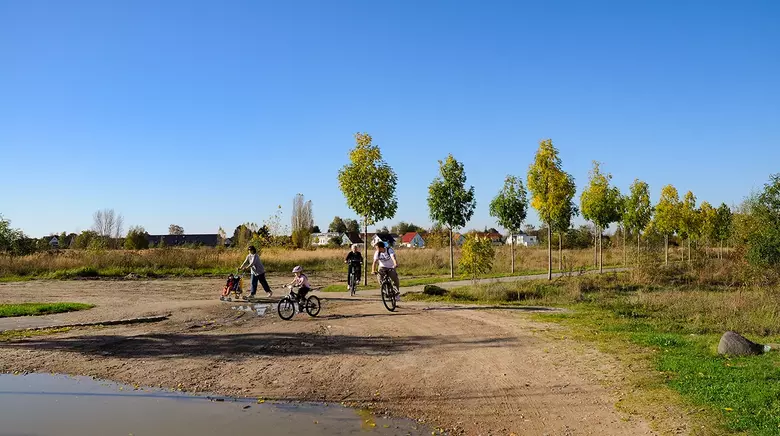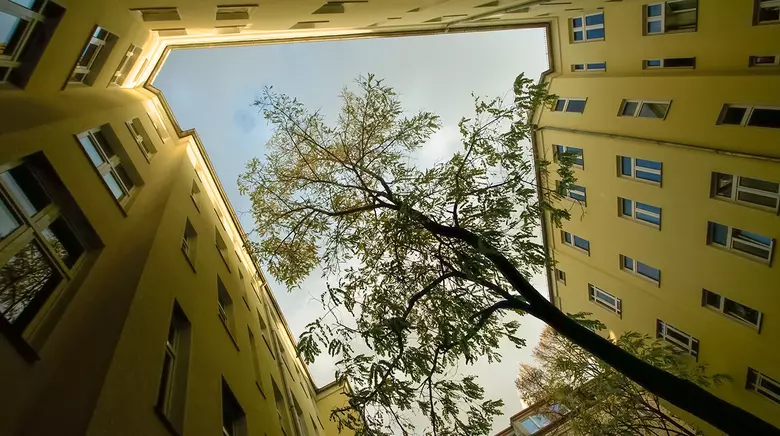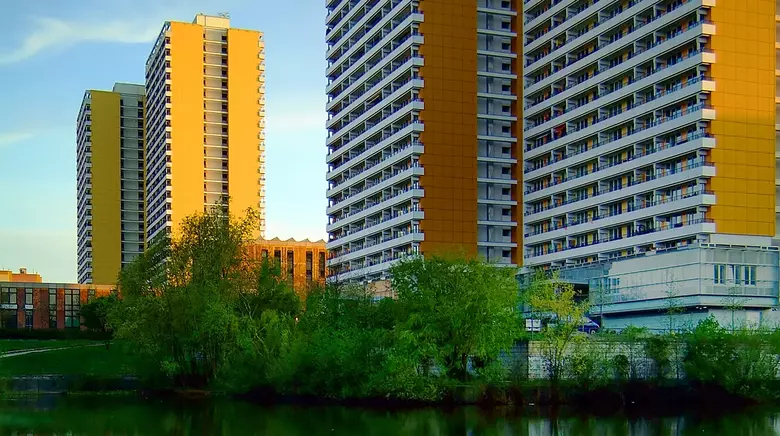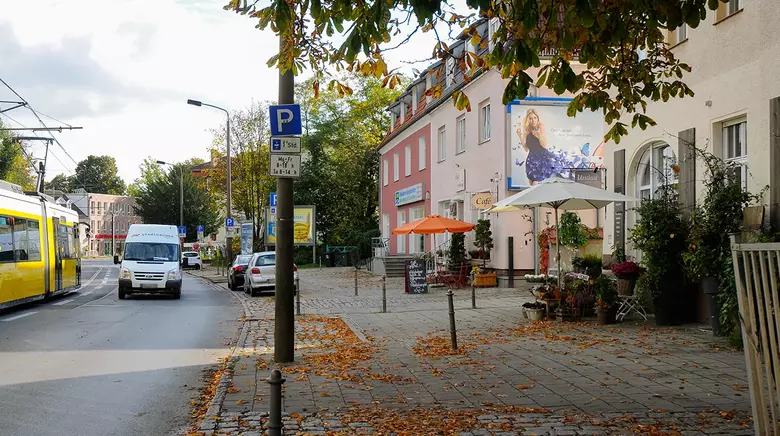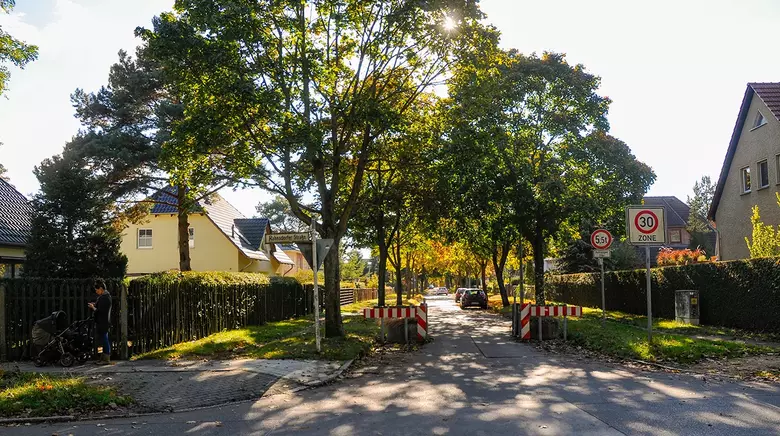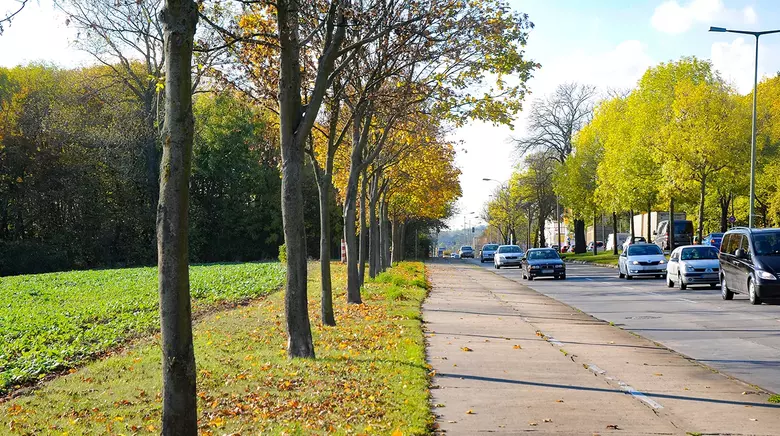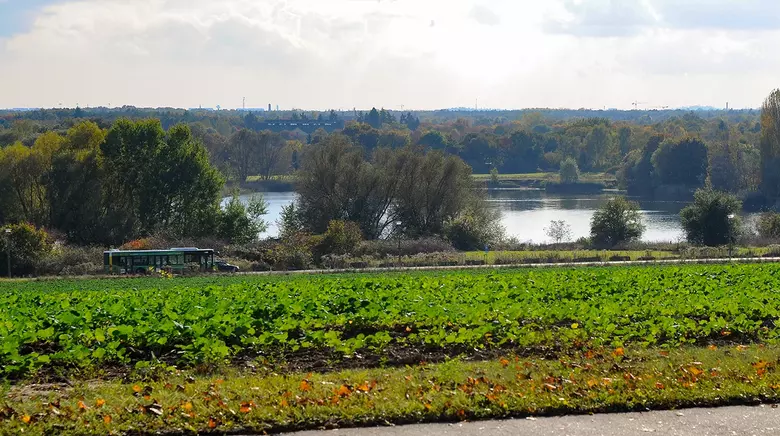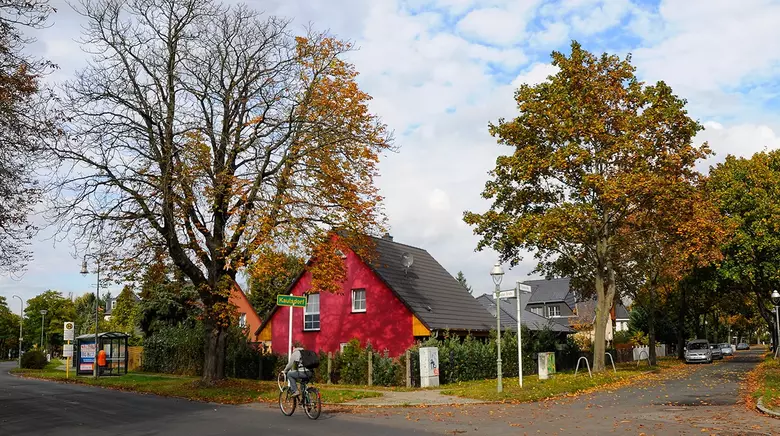Districts in Berlin: Colorful Neighborhood Life
In Berlin there are 12 districts with different mentalities that harmonize with one another. The spectrum of districts ranges from trendy to stuffy middle-class to sophisticated. In each district you will find several neighborhoods – small urban oases where the life of its residents is concentrated.
Approximately one million Berliners live in the Berlin metropolitan area, the so-called capital region of Berlin-Brandenburg. The well-developed public transport system und die beste Infrastruktur Deutschlands vereinfachen das Großstadtleben und verbinden die Berliner Bezirke optimal mit dem Umland.
OUR TIP
For an easier start in your new neighborhood, download our PDF “New in the Neighborhood” (189 kB). In this document you can add important information about your new home such as your family doctor, nearby bus stops, bank branches, sports clubs and much more. Welcome to your new home!
Berlin Districts at a Glance
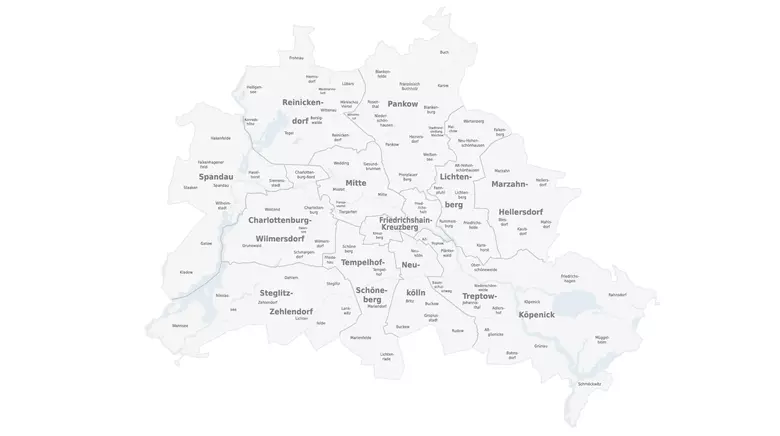
| Borough | Area in ha | Population |
|---|---|---|
| Mitte | 3,947 | 371,407 |
| Pankow | 10,301 | 397,406 |
| Charlottenburg-Wilmersdorf | 6,472 | 336,249 |
| Friedrichshain-Kreuzberg | 2,016 | 281,323 |
| Spandau | 9,191 | 239,942 |
| Reinickendorf | 8,946 | 261,919 |
| Lichtenberg | 5,229 | 283,121 |
| Marzahn-Hellersdorf | 6,174 | 262,015 |
| Treptow-Köpenick | 16,842 | 259,524 |
| Neukölln | 4,493 | 327,522 |
| Tempelhof-Schöneberg | 5,309 | 346,108 |
| Steglitz-Zehlendorf | 10,250 | 304,086 |
The best way to subdivide Berlin is into the local fare zones established by the Berlin Traffic Authority (Berliner Verkehrsbetriebe/BVG). Fare Zone A covers the city center, Fare Zone B starts at the S-Bahn Ring (intracity and suburban railway) and ends at the city limits, and Fare Zone C covers the Berlin suburbs, including Potsdam. Get to know Berlin’s districts and what makes each of them unique.
OUR TIP
If you are looking to make friends in your district, use the website “nebenan.de.” There you can network directly with people in your neighborhood.
Berlin’s Central Districts
Berlin-Mitte: The Heart of the City
Berlin-Mitte is the interface between the old and the new Berlin – a fast-paced and lively metropolis with spectacular building projects, theaters, museums, galleries, boutiques, original event venues and the Government District. The German Bundestag (federal parliament ), many embassies, German state offices and the consulates of Barbados and Monaco are located in the Tiergarten district. The German Federal President resides in Bellevue Palace.
The Mitte district is home to around 371,400 residents. Berlin-Mitte is a shopping paradise with cultural offerings and interesting sights. The district is also the location of many emergent companies, corporate subsidiaries, exclusive shops, boutiques, creative people and the tourism industry.
The district’s landmarks are the Brandenburg Gate, the Gendarmenmarkt, the TV Tower, Museum Island, Alexanderplatz, Hackescher Markt, the Nikolaiviertel, the Rotes Rathaus (Red City Hall), Friedrichstraße, the Reichstag, Potsdamer Platz, Tiergarten, Unter den Linden and Spandauer Vorstadt.
The Boroughs of Berlin-Mitte
Gesundbrunnen, Hansaviertel, Mitte, Moabit, Tiergarten, Wedding
Berlin-Pankow: A Hub for Families
Pankow, especially the district of Prenzlauer Berg has the highest population density in Berlin and is characterized by a wide range of culinary and cultural offerings. Pankow is considered to be a district with individual lifestyles and a specific social milieu. The district of Pankow is home to approximately 397,400 residents.
Due to extensive redevelopment projects, the district has become increasingly attractive, which has resulted in a rapid increase in rents. More and more high-income earners and young families want to move to the district.
While the district of Prenzlauer Berg boasts institutions of the local scene such as the Kulturbrauerei, the Prater and Mauerpark, the rest of Pankow scores points with public parks and wooded areas where there is hardly any industry – a residential area with apartment buildings and villa neighborhoods.
The Boroughs of Berlin-Pankow
Blankenburg, Blankenfelde, Buch, Französisch Buchholz, Heinersdorf, Karow, Malchow, Niederschönhausen, Prenzlauer Berg, Rosenthal, Weißensee, Wilhelmsruh
Berlin Charlottenburg-Wilmersdorf: From the Old Town to the Zoo
In Charlottenburg-Wilmersdorf, a structured business location merges with promenades and shopping streets. The district is the meeting place of bohemians, intellectuals and artists, and stands out with its numerous quiet spots. Lietzensee and Ruhleben, for example, are top residential addresses – close to the city center but with plenty of green space. The wide range of pubs, restaurants, theaters, and parks is not only popular with residents. Stuccoed apartment buildings with leafy backyards dominate the center, while elegant single-family houses and villas can be found further west. The district of Charlottenburg-Wilmersdorf is home to approximately 336,250 residents.
Berlin Charlottenburg-Wilmersdorf captivates with a touch of decadence, a juxtaposition of luxury and low-budget as well as celebrities and “ordinary people.” The district’s hotspots are Charlottenburg Palace, the Kurfürstendamm, Zoo Berlin, the Olympic Stadium, Berlin ExpoCenter City / Funkturm (Radio Tower), the Kaiser Wilhelm Memorial Church, Grunewald, and Teufelsberg.
The Boroughs of Berlin Charlottenburg-Wilmersdorf
Charlottenburg, Wilmersdorf
Berlin Friedrichshain-Kreuzberg: Alternative Living
Berlin Friedrichshain-Kreuzberg is one of Berlin’s two East-West districts, and has become a district for art and creative work. Innovative projects, attractive service organizations, the creative and media scene, bar and club culture as well as junk and designer shops make this district the capital for Berlin’s biggest trends. The district is home to approximately 281,300 residents.
The Kreuzberg shops are characterized by a multicultural atmosphere. Investors are building one new building complex after the other, which has also inspired high-income earners to settle in Kreuzberg. Organic supermarkets flourish and the neighborhood language is a mixture of English, Spanish, Danish, Hebrew, and Turkish.
Friedrichshain is definitely the party district of Berlin and is rapidly developing as the city’s media center. The so-called Oberbaum City is an inspiring place for service providers and creative minds. Berlin Friedrichshain-Kreuzberg is especially well-known and popular because of the following places: East-Side Gallery, Oberbaumbrücke, Mercedes Benz Arena, Karl-Marx-Allee, Volkspark Friedrichshain, Simon-Dach-Straße, Boxhagener Platz, Mauermuseum at Checkpoint Charlie, Viktoriapark, Oranienstraße, Marheineke Markthalle, Paul-Lincke-Ufer, Fraenkelufer and the Maybachufer.
The Boroughs of Berlin Friedrichshain-Kreuzberg
Friedrichshain, Kreuzberg
The Outlying Boroughs
Berlin Steglitz-Zehlendorf: A Place for Recreation
If you want to live in a quiet residential area surrounded by green space, move to Berlin Steglitz-Zehlendorf. The district has everything you need to feel at home. On Schlossstraße, people go shopping, to the cinema, and to the Schlossparktheater. The Botanical Garden, the largest of its kind in Germany, is a great place for a stroll, and the promenade along the Teltow Canal is ideal for joggers and cyclists. Sailing and surfing are popular in the Wannsee district. The district of Steglitz Zehlendorf is the home to approximately 304,086 residents.
Rents are high, but there is a variety of housing options: publicly-subsidized housing, city villas and single-family homes. In Zehlendorf, almost 50 percent of the urban area consists of lakes and forests. The locality of Dahlem is one of the most expensive residential areas in Berlin. In the summer, many Berliners visit the shores and lakeside of Wannsee. Another landmark is the Glienicke Palace. Steglitz-Zehlendorf is quiet, spacious, and perfect for affluent families.
The Boroughs of Berlin Steglitz-Zehlendorf
Steglitz, Lichterfelde, Lankwitz, Zehlendorf, Dahlem, Nikolassee, Wannsee
Berlin-Spandau: An Industrial Center in the Green Belt
True “Spandauers” do not like to be called Berliners. Spandau is a close-knit community that prefers to thrive without outside help. Spandau’s Old Town, the Spandau Citadel and the Havel Festival are cherished and tended to as if it were their own personal property. In Spandau people stick together.
25 percent of the district is covered by forest and lake areas. Spandau is a popular residential area for people who appreciate rural living. At the same time, the district is Berlin´s largest industrial area. Siemensstadt, for example, shapes the character of the entire district. Berlin-Spandau has a population of around 239,950.
The Boroughs of Berlin-Spandau
Spandau, Haselhorst, Siemensstadt, Staaken, Gatow, Kladow, Hakenfelde, WIlhelmstadt, Falkenhagener Feld
Berlin Tempelhof-Schöneberg: A City District with an International Past
As soon as John F. Kennedy ended his speech on the balcony of Schöneberg Town Hall with the famous statement “Ich bin ein Berliner”, the district became known worldwide. Schöneberg is where Marlene Dietrich was born, Helmut Newton was buried, and the Comedian Harmonists were founded. Kurt Tucholsky, Günter Grass and Albert Einstein also lived in Schöneberg. The district of Tempelhof-Schöneberg is home to about 346,100 residents.
In the north of the district, big city life hustles and bustles around the Kaufhaus des Westens (KaDeWe) department store. The buzzing gay and lesbian scene can be found between Fuggerstraße and Nollendorfplatz. The south is more of a quiet residential area with magnificent villas. The neighborhoods of Mariendorf and Lichtenrade appear quite tranquil with their single-family houses and duplexes.
The quality of life is particularly high in the restored old buildings between Viktoria-Luise-Platz and Bayrischer Platz. The entire neighborhood boasts cafés, restaurants, and shopping opportunities.
A highlight of Tempelhof is Tempelhofer Feld, the former airport that was converted into a huge park. Whether it’s a concert, sporting events, fairs, festivals, theatre, dance music or variety shows – there is always something going on in Berlin-Tempelhof-Schöneberg.
The Boroughs of Berlin Tempelhof-Schönefeld
Tempelhof, Schöneberg
Berlin-Reinickendorf: A District of Contrasts
In Berlin-Reinickendorf, you will on the one hand find charming residential areas with city villas and single-family houses, such as Frohnau and Heiligensee, and on the other hand, the Märkische Viertel, a high-rise apartment complex with 40,000 residents. About 25 percent of Reinickendorf residents are over 65 years old.
The district’s landmark is the “Dicke Marie” – an 800-year-old oak tree. The halls of the Borsig Tower are an inviting shopping area and a popular meeting place for young people. The Buddhist House is the most important Buddhist place of worship in Europe. The district of Berlin-Reinickendorf is home to approximately 261,900 residents.
The Boroughs of Berlin-Reinickendorf
Frohnau, Hermsdorf, Heiligensee, Waidmannslust, Lübars, Konradshöhe, Tegel, Wittenau, Reinickendorf, Lübars
Berlin Treptow-Köpenick: A Popular Destination for Berliners
Treptower Park, Plänterwald, the bustling banks of the Spree, the Soviet Memorial, cafés and restaurants all make a trip to Berlin-Treptow worthwhile. In the south-east of Treptow you will find the Adlershof science and technology park (WISTA), one of the 15 largest technology parks in the world.
Treptow is known for its fair rents and characterized by Wilhelminian-style houses, old buildings, and one-family and terraced houses. The district of Treptow-Köpenick is home to around 259,500 residents.
The district of Berlin-Köpenick is also probably the most idyllic in Berlin and consists of 70 percent lakes and woodlands. Life there is like living in a small town – the perfect place for people looking for outdoor adventures and family activities.
The district’s showpieces are the Insel der Jugend (Island of Youth), Köpenick Town Hall, Köpenick Castle and the FEZ Wuhlheide family recreation center. The Treptow pier is at the center of Berlin’s boat tours. The Müggelsee lake in the south is a popular day-trip destination for Berliners.
The Boroughs of Berlin Treptow-Köpenick
Alt-Treptow, Plänterwald, Baumschulenweg, Johannisthal, Niederschöneweide, Alt-Glienicke, Adlershof Bohnsdorf, Oberschöneweide, Köpenick, Friedrichshagen, Rahnsdorf, Grünau, Müggelheim, Schmöckwitz
Berlin-Lichtenberg: The Creative’s Insider Tip
The center of the Berlin-Lichtenberg district is Alt-Lichtenberg. Here one is surrounded by spacious parks and shopping streets. Lichtenberg is making a comeback and is gradually shedding its reputation as a prefab housing development. The Wilhelminian-style flats are regarded as an insider tip among young creatives. Lichtenberg has a population of around 283,100.
Berlin’s youth have built their own oasis of beaches and bars in the Rummelsburg district. Only Neu-Hohenschönhausen is still characterized by prefab high-rise buildings, yet with a more positive image. In Alt-Hohenschönhausen you will find a village idyll with manor houses and villas.
Lichtenberg’s most prominent points of interest are the Friedrichsfelde Zoo, the Karlshorst harness racing track, the Hohenschönhausen Memorial, the Orankesee open-air swimming pool, and the Berlin Sports Forum.
The Boroughs of Berlin-Lichtenberg
Wartenberg, Malchow, Falkenberg, Hohenschönhausen, Lichtenberg, Friedrichsfelde, Karlshorst
Berlin-Neukölln: A District on the Upswing
Ever since the rents in Kreuzberg rose to Charlottenburg levels, the north of Neukölln has become heavily populated. The intersection of the districts of Neukölln and Friedrichshain-Kreuzberg, also nicknamed Kreuzkölln, is especially popular with the younger crowd. The international creative and cultural scene is gradually establishing itself on other streets too. The area between Weigandufer and the airfield is in high demand. The south of Neukölln, especially the high-rise housing development Gropiusstadt, attracts low-income families. The district is the home to about 327,500 residents.
Rudow, Britz and Buckow, on the other hand, offer a high quality of life – quiet one-family housing developments and allotment garden colonies leave a cozy impression. The hot-spots of Neukölln are Sonnenallee, Hermannplatz, and Volkspark Hasenheide. A cultural program is offered by the Neukölln Opera, the Heimathafen Neukölln, Britz Castle, and the Estrel Festival Center.
Boroughs in Berlin-Neukölln
Neukölln, Britz, Buckow, Rudow
Berlin Marzahn-Hellersdorf: A Flagstone Garden
After Germany’s reunification in 1989, the facades of 60,000 flats in Marzahn were painted colorfully and parks were landscaped in the local neighborhood. This splash of color has had a significant impact on the district´s image. Marzahn and Hellersdorf are known for their prefab housing developments, while the boroughs of Mahlsdorf, Kaulsdorf and Biesdorf together make up what is currently the largest residential development of single-family homes in Berlin.
Most families live in Berlin Marzahn-Hellersdorf. Eastgate Berlin beckons you to go shopping. Another attraction is the “Gärten der Welt” (Gardens of the World), a 30-hectare well-maintained park with unique examples of international garden art. The district has a population of around 262,000.
Boroughs in Berlin Marzahn-Hellersdorf
Marzahn, Biesdorf, Kaulsdorf, Mahlsdorf, Hellersdorf
The Outskirts of Berlin
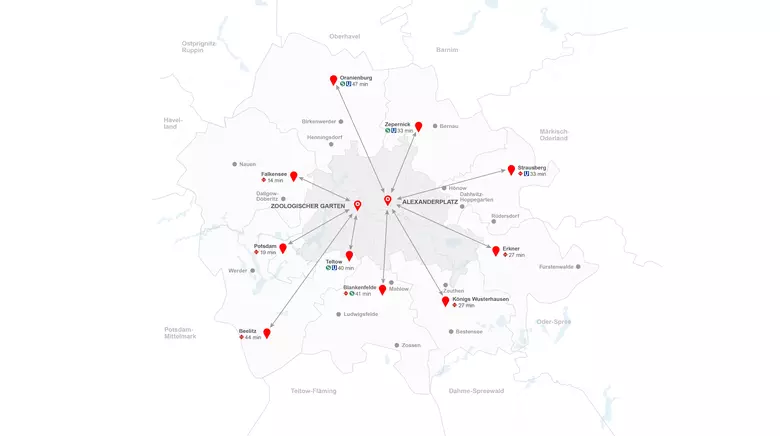
Approximately one million Berliners live in the outskirts of Berlin – the capital region of Berlin-Brandenburg. The Berlin metropolitan region is the name used to describe the densely-populated area around the city of Berlin which is connected to the S-Bahn (railway system within and around Berlin) and the regional rail network, and is located on the Berlin Ring (Highway A10). Approximately 50 communities live here.
Brandenburgers work in Berlin and Berliners in Brandenburg. As is typical for big cities, people commute every day. Excellent transportation connections allow for a wide choice of locations within the capital region.
The idyllic surrounding region beckons with historic towns and villages, nature parks, and bathing lakes. Rents are often cheaper than in the city center, but there are additional costs in terms of gasoline and maintenance for cars, or tickets to use public transport (ÖPNV).
If you are looking for peace and quiet and want to be in the countryside quickly, you will find what you are looking for in Berlin’s surrounding region. Even here, however, there are price differences. The residential parks of Teltow-Fläming, Dahme-Spreewald or the Oberhavel communities, for example, tend to house the residences of higher-income households. No matter which corner of the surrounding area you choose, be sure to compare building and rental costs in advance.

